October 10, 2021
Martha O'Kennon
What a week. It finished with quite a lot of rain. In fact, it is raining right now (Friday night). Now it's really raining (Sunday morning).
The Japanese Anemones are still blooming hesitantly and the Euonymus is starting up. This may be the last spray of Goldenrod we see this week.
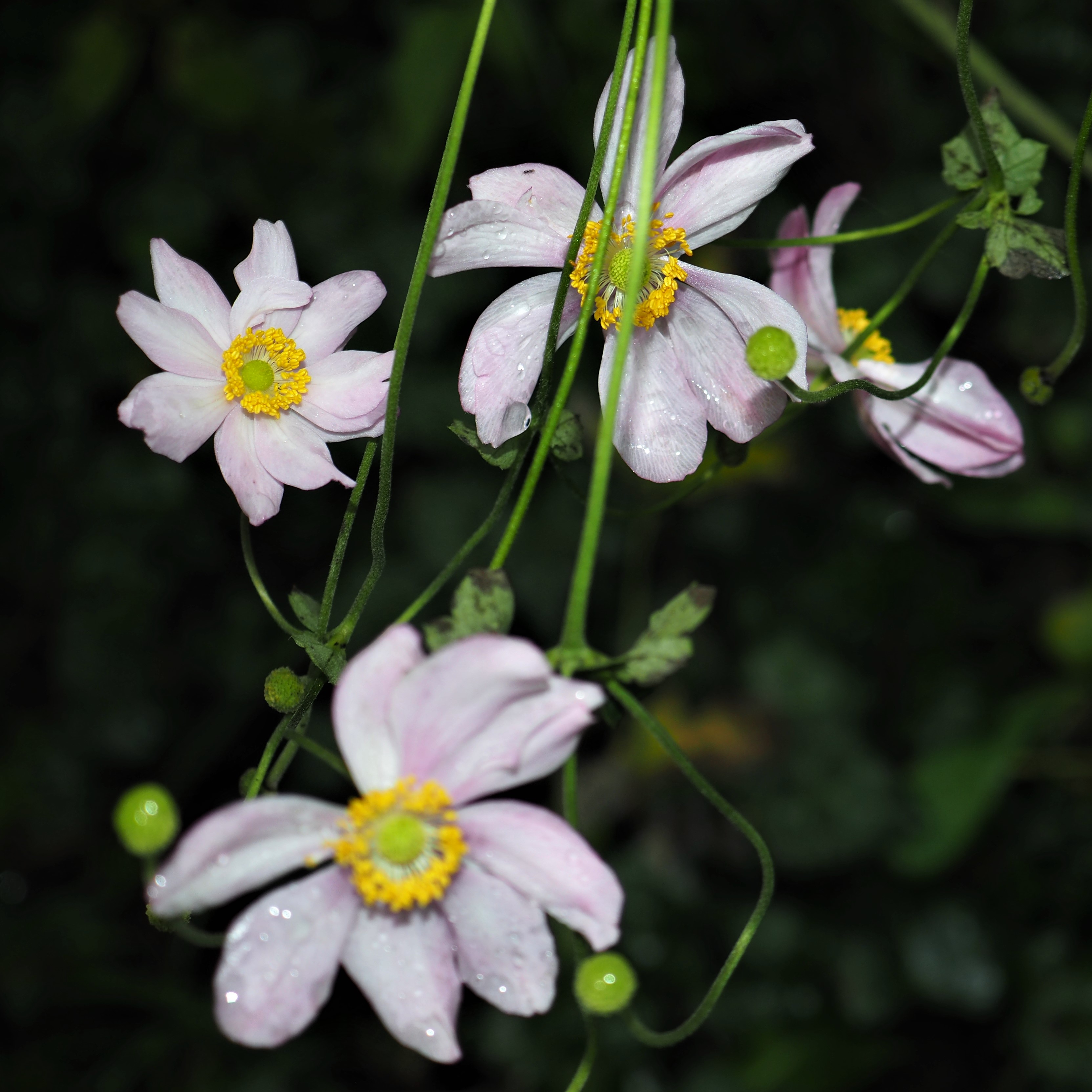
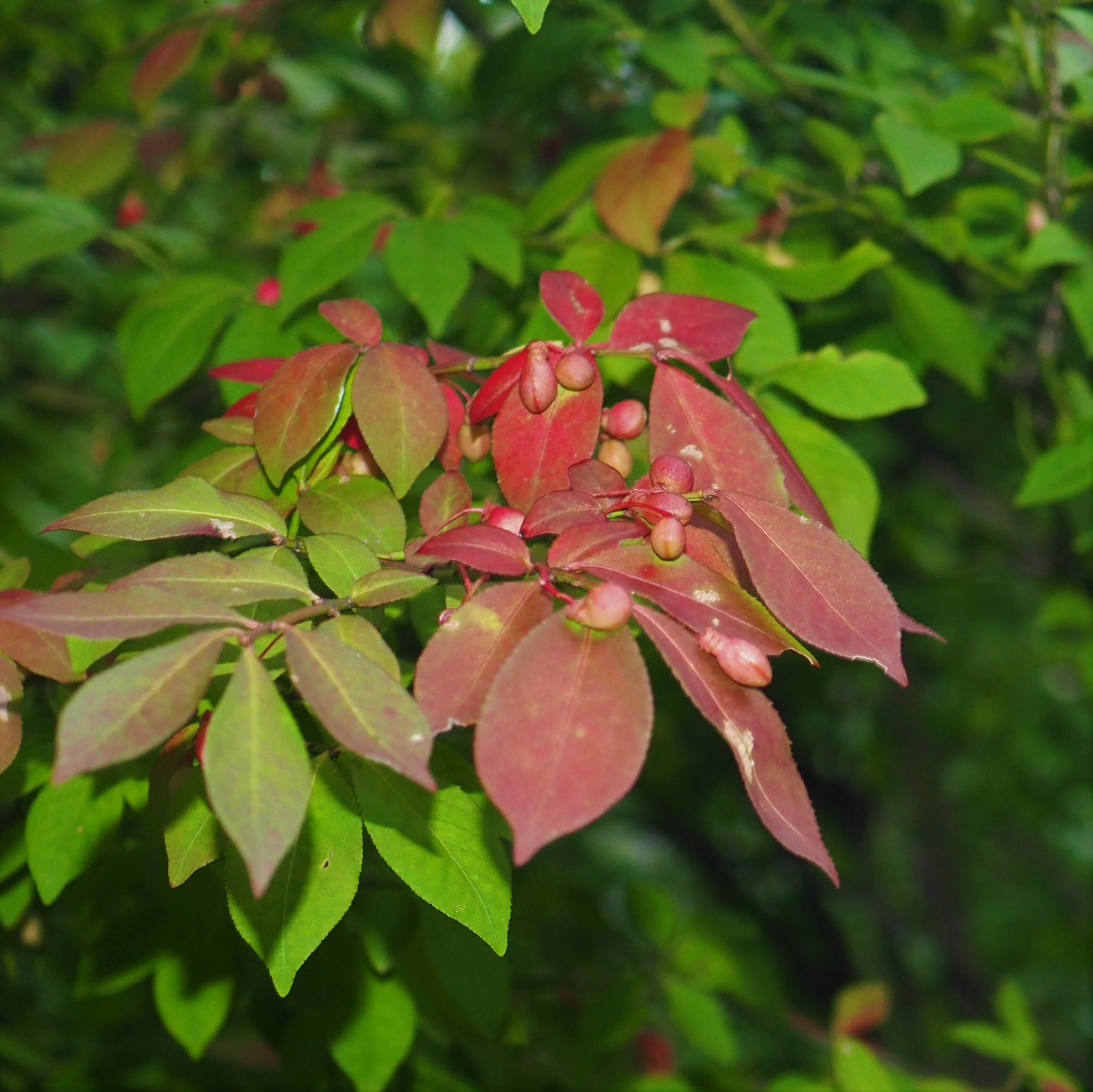
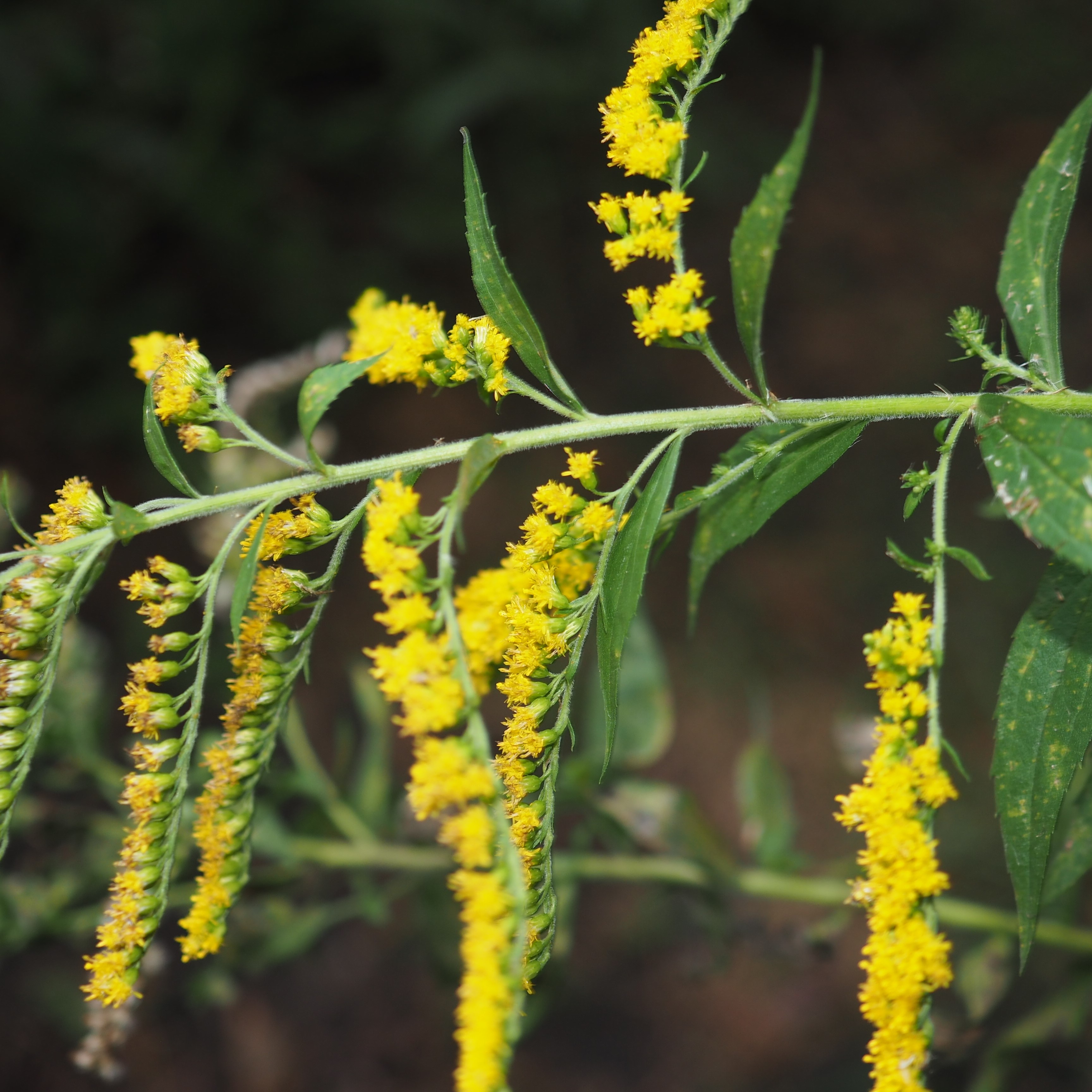
Remember that there is information in the name of the file for each image. You can see it by mousing over the
image - look at the lower left of the screen. Or you can click on the image to get to the (usually) larger image.
Then the info is displayed in the address line above. Sometimes the second click will actually display a
different view of the original image.
Last week the Ants were winding down and they continue to do that. It's not that there aren't many ants but that most of them are representatives of one or two species. Here's an Eastern Black Carpenter Ant, a Small Honey Ant, and a Mystery Ant on the center of a Fleabane flower. You can still see lots of Small Honey Ants running around on top of Redbud Leaves.
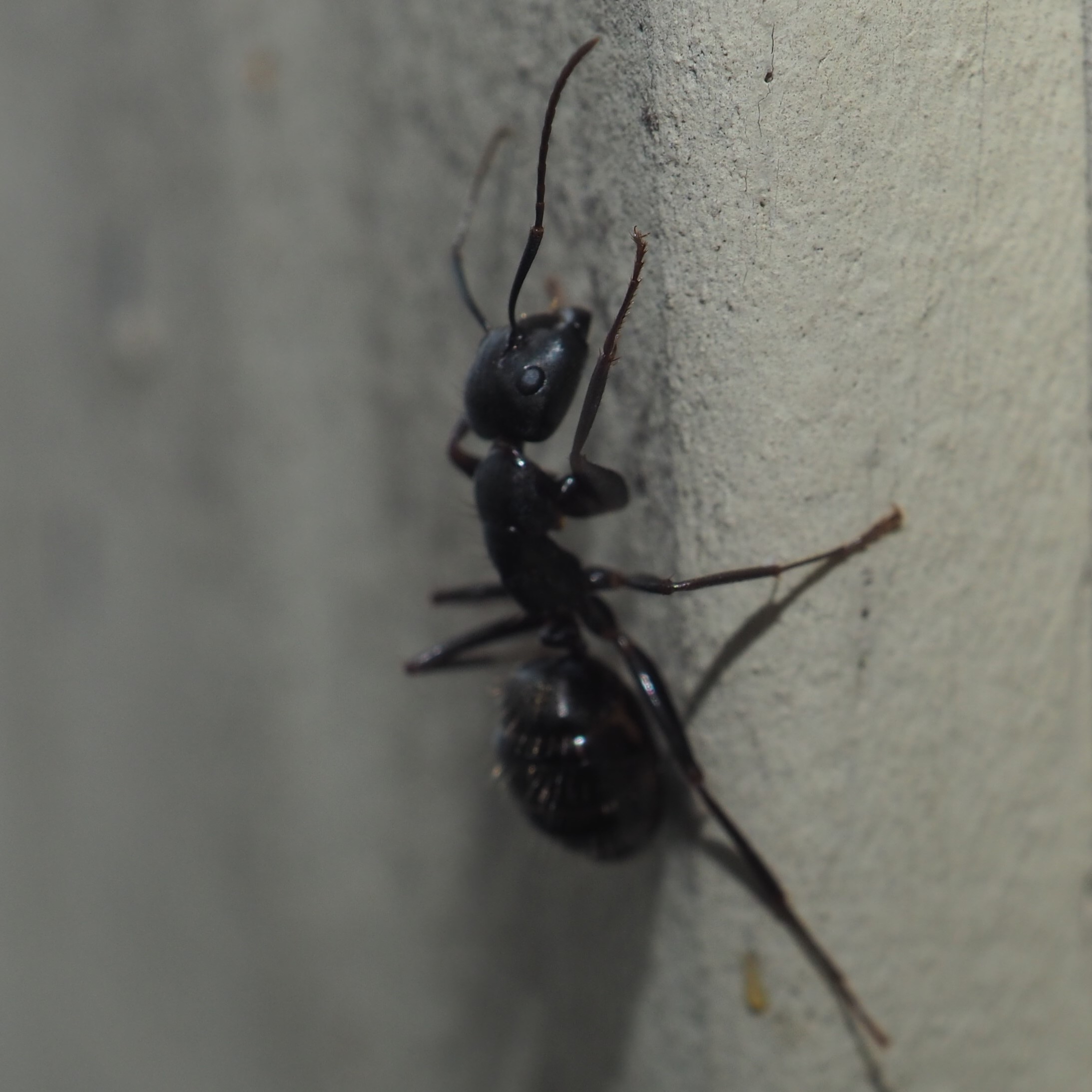
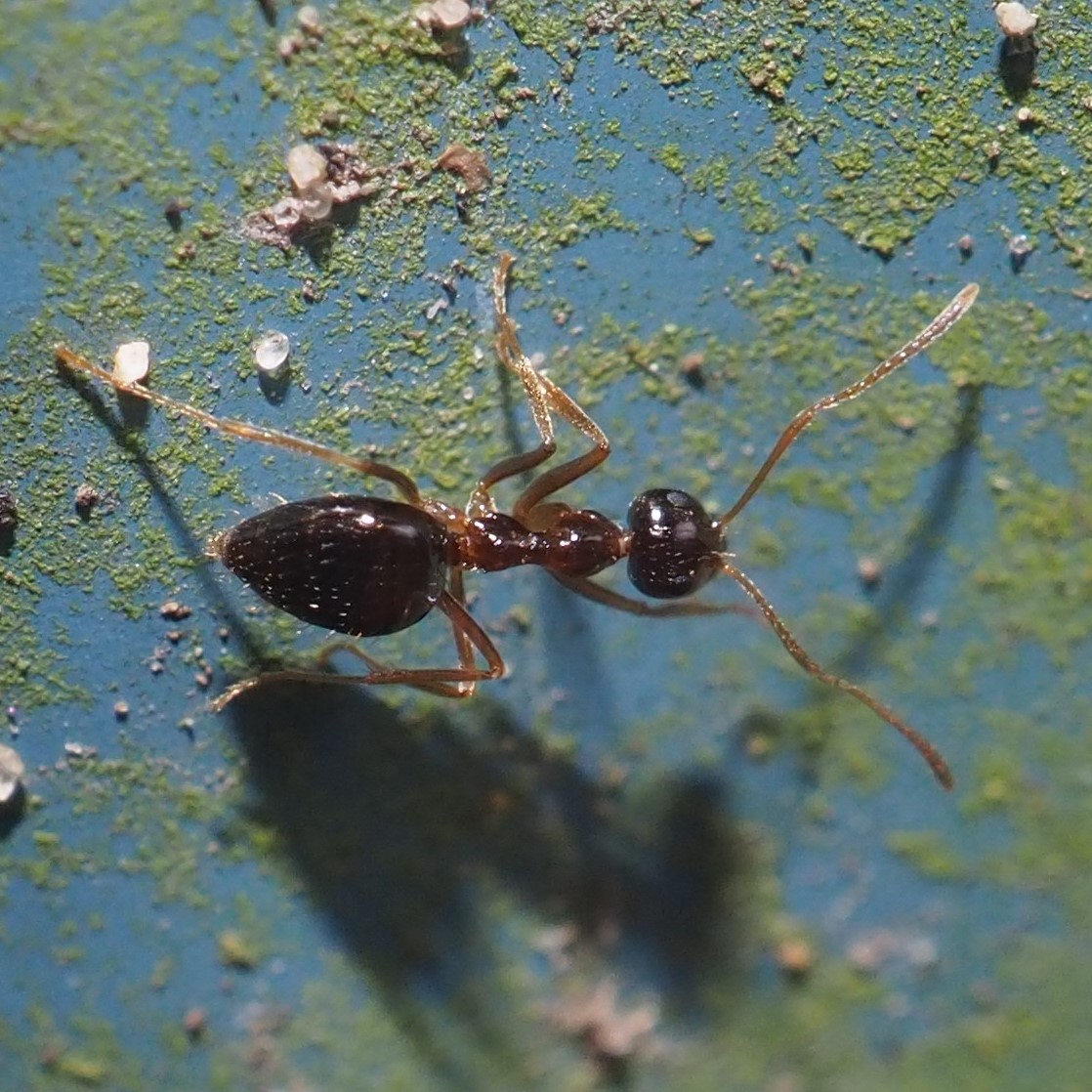
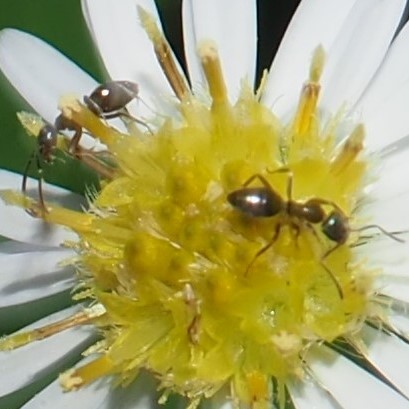
Rain always seems to put a damper on the Barklice. But there was no lack of Echmepteryx hageni. Here's a typical shot where the light hits the whole creature and lights it up. Second is the more usual view. We did see a couple of Polypsocus corruptus. Picture 3 shows a female, and picture 4 a male.
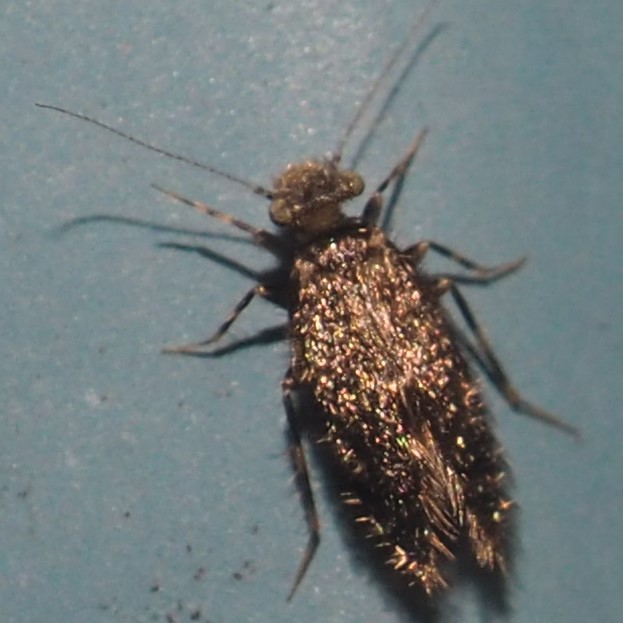
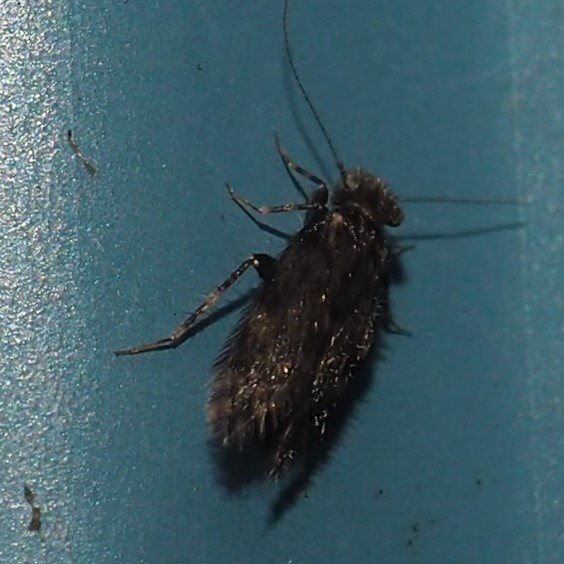
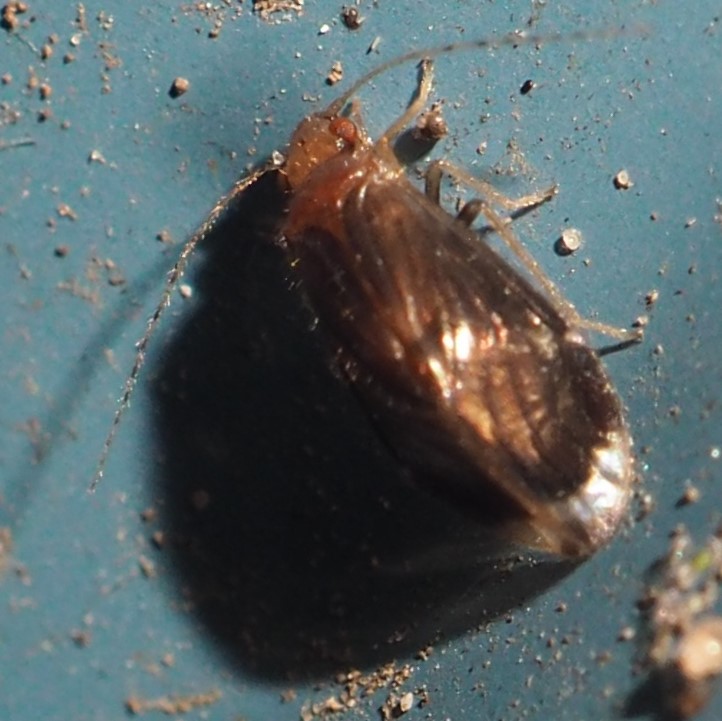

We saw a good number of Valenzuela flavidus nymphs this week. Picture 2 shows an adult shortly after its final moult. It hasn't got its usual colors yet. In picture 3, you see the adult in all its glory. Fourth is probably Trichadenotecnum alexanderae, but it's getting hard to get people to agree from a photograph. There are a number of other species under this genus. But I think that's what this one is.

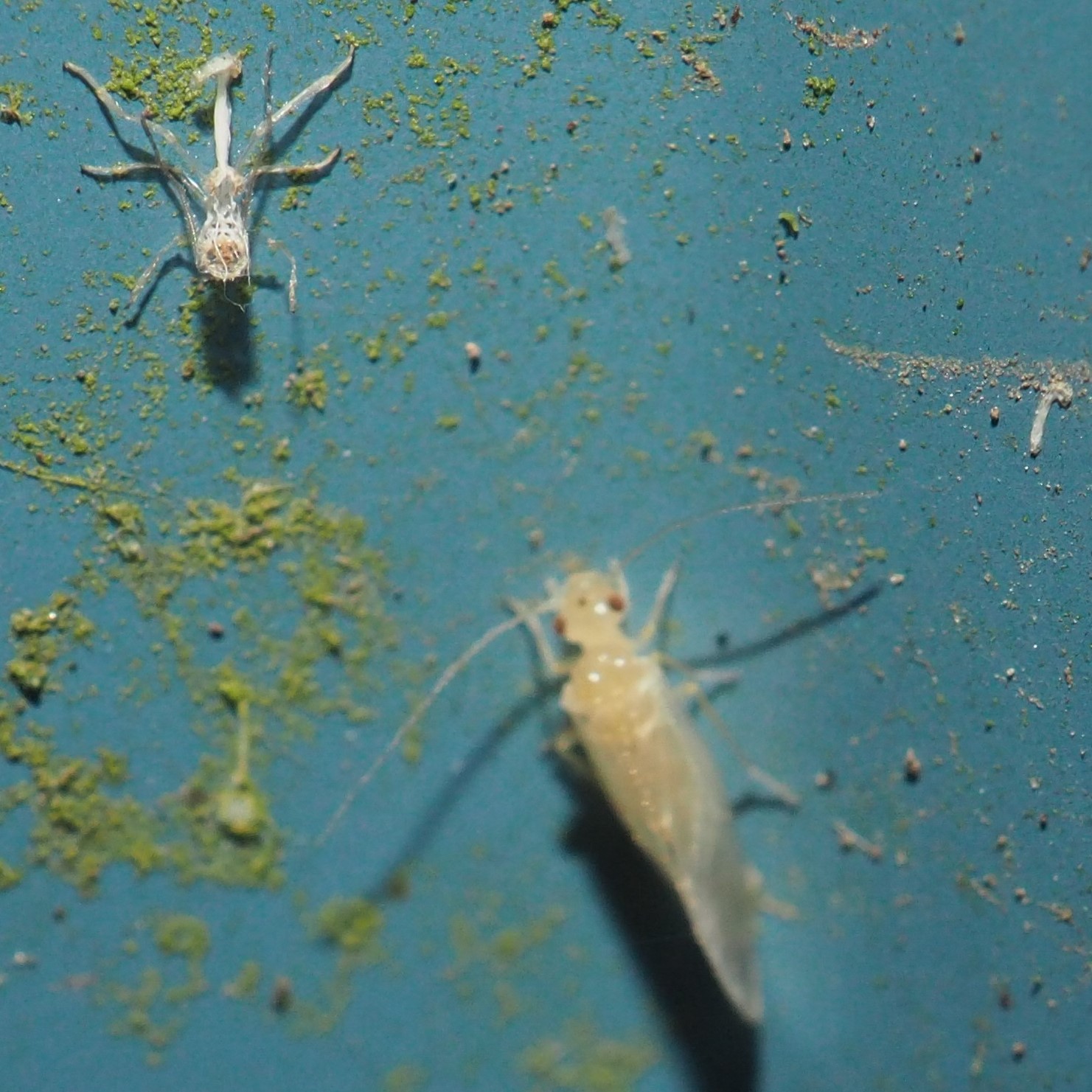
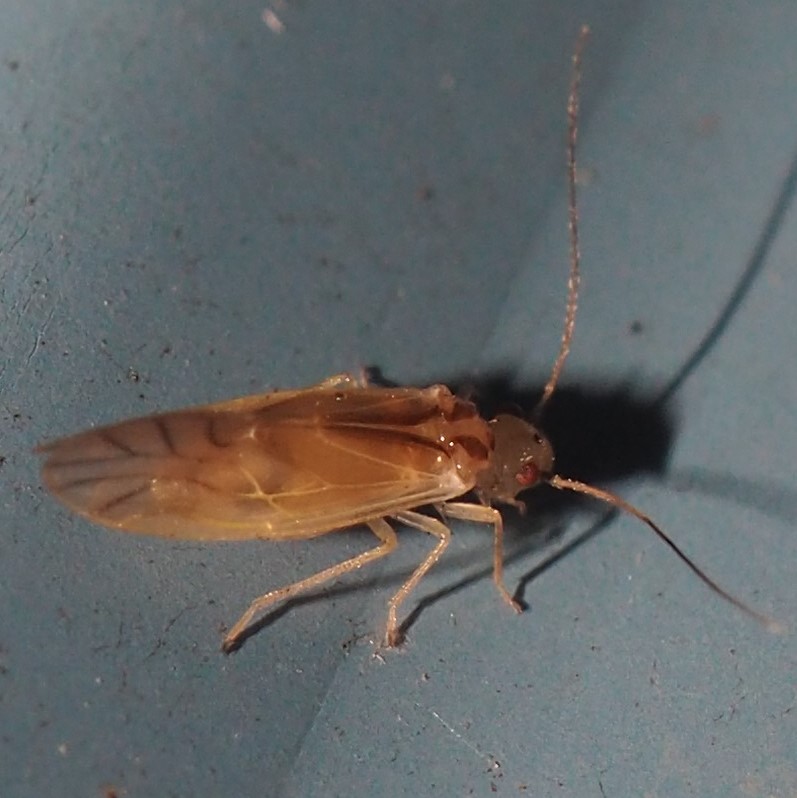
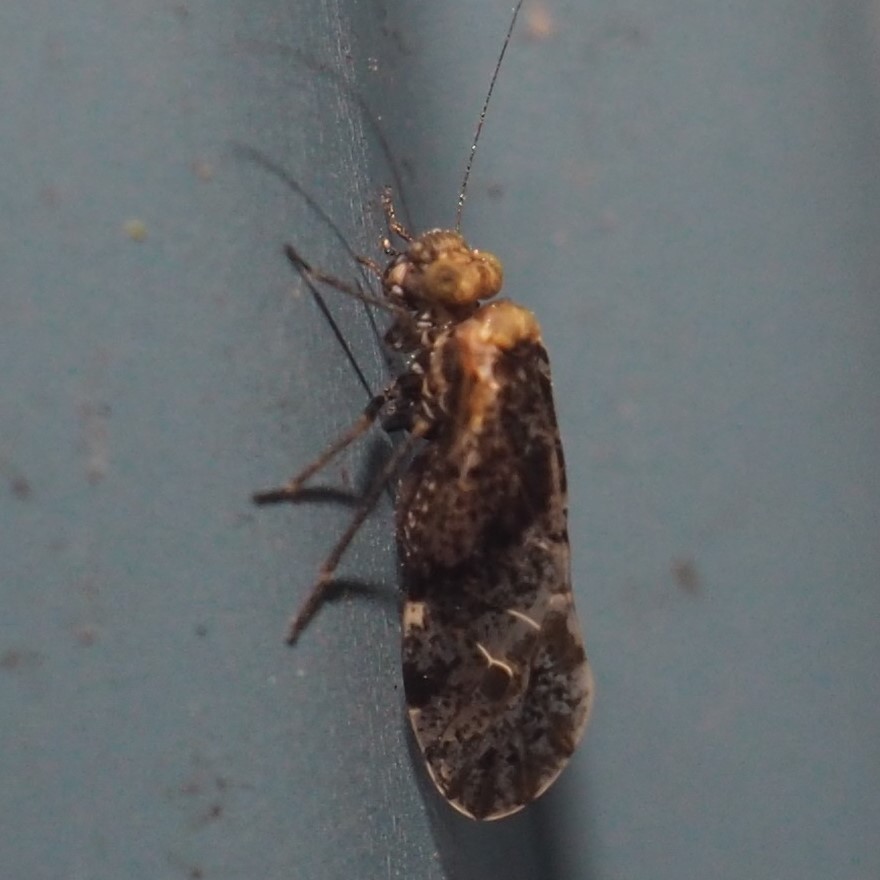
Here is a mystery (first two pictures). I can't find anyone to identify it - but that's ok. Truth will out... What isn't a mystery is the large number of new Graphopsocus cruciatus adults (picture 3). I've seen at least a half-dozen just this week. What is a mystery is, what is happening in picture 4? Embarassingly, Diane, our official Psocid Psavant, says that it is a DEAD Psocid, and I'll hazard a guess that it's a dead Graphopsocus cruciatus...

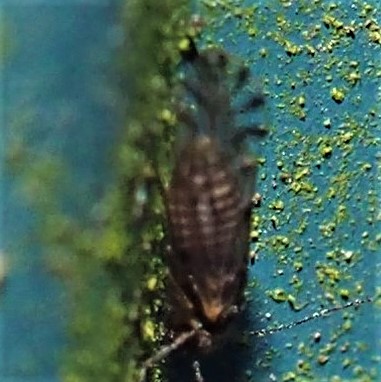
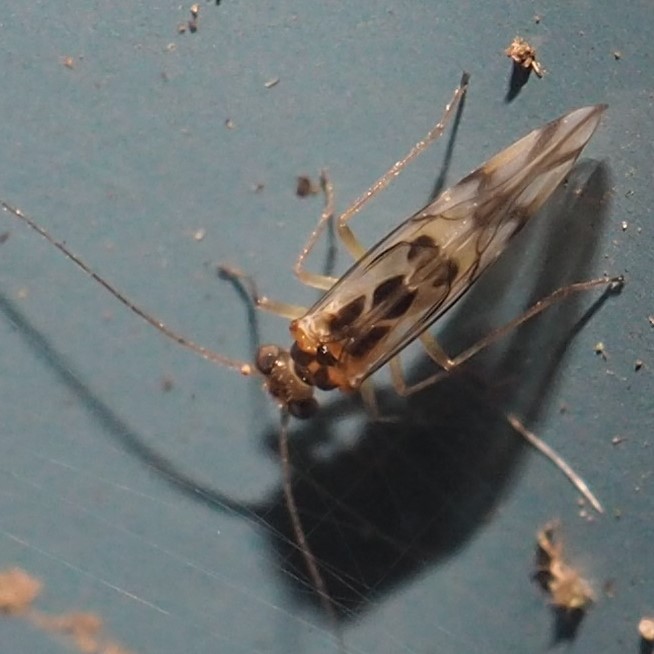

But my favorite Barklouse is still Ectopsocus meridionalis, for they can always be seen either laying eggs or hatching from them. First here is a collection of eggs laid some time ago. Picture 2 shows a set of eggs from North Wall Panel 8, in the process of hatching. The rain apparently helped to loosen up the eggs from one another. You can see in the lower right a new nymph that has just hatched.
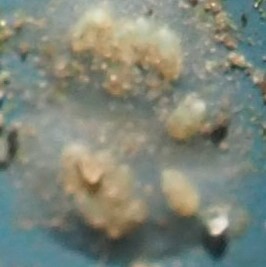
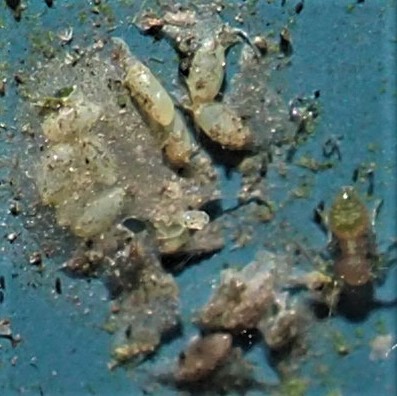
Since the Asters are finishing their magnificent bloom for the year, so the Bees are once more not so evident as they were, so we pick up with the Beetles. On Friday night, when I was starting to compose the blog, I was tempted to say the Beetles were also going to sleep for the winter. But Saturday afternoon, they were back at work mystifying me. There are always a few "Flea" Beetles, tiny shiny little things that all look alike from where I can see them. There are still quite a few Asian Lady Beetles. The third Beetle is an old friend, the Black Vine Weevil, but it looks completely different when it's trying to hide under a clapboard.
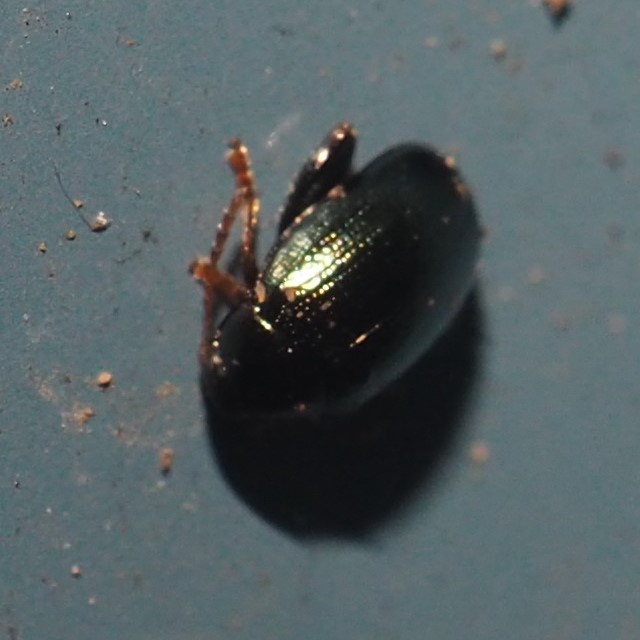
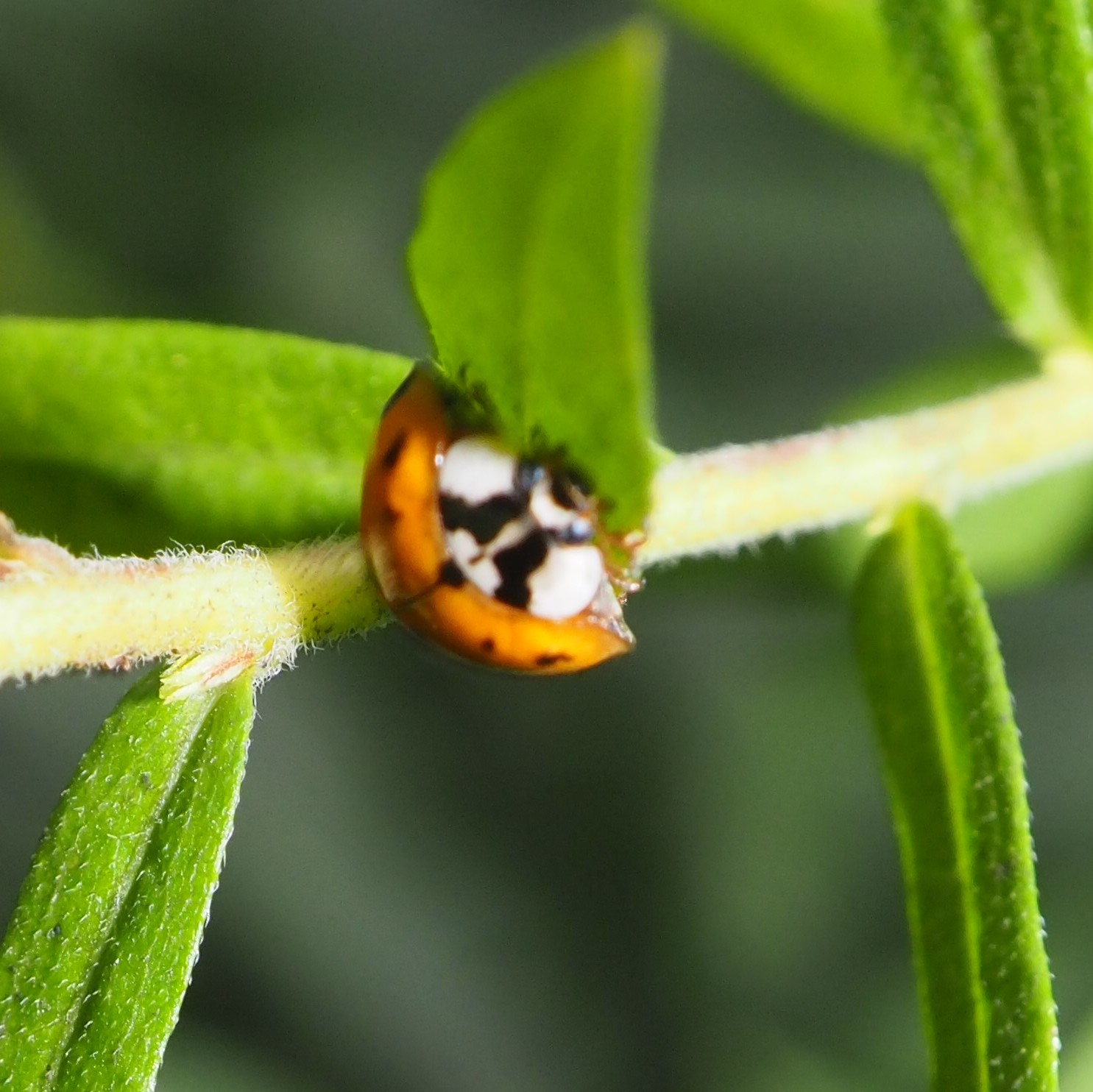
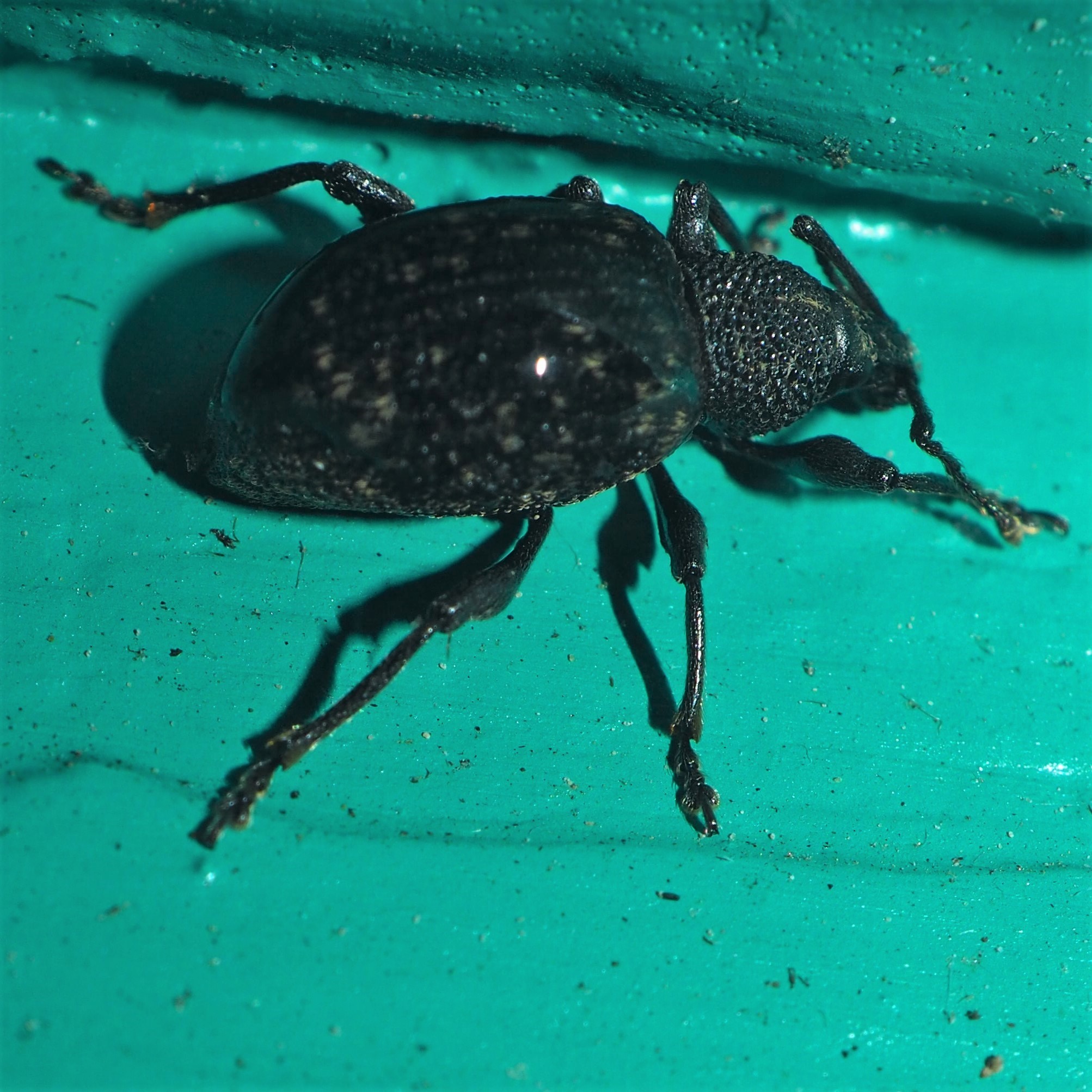
Beetle #1 was identified by two different people as a Darkling Beetle and as a Marsh Beetle. One of those two people tagged a third so maybe soon we'll know what this spotty fellow is. The second is Telephanus atracapillus, whose first name I recognized from the last time I saw it, but whose second name is new after another of those "taxon swaps" they do fairly often nowadays to try to agree on the name of a creature that has been labeled differently by people in different locations. The third I thought at first must be a Rove Beetle, but then after consulting with a couple of other people's pictures narrowed it down to a member of Genus Carpophilus. I think the last picture shows the same Beetle as picture 3, but I saw them a few minutes apart.
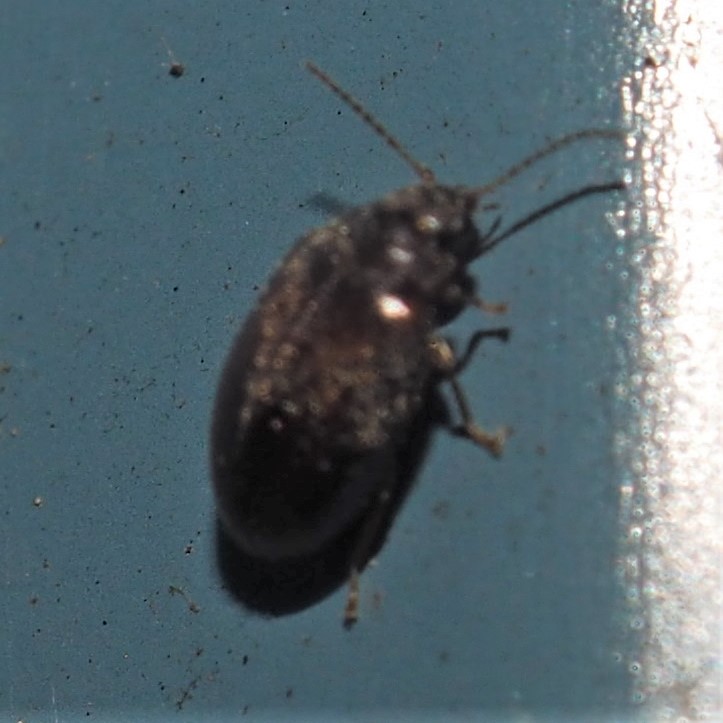
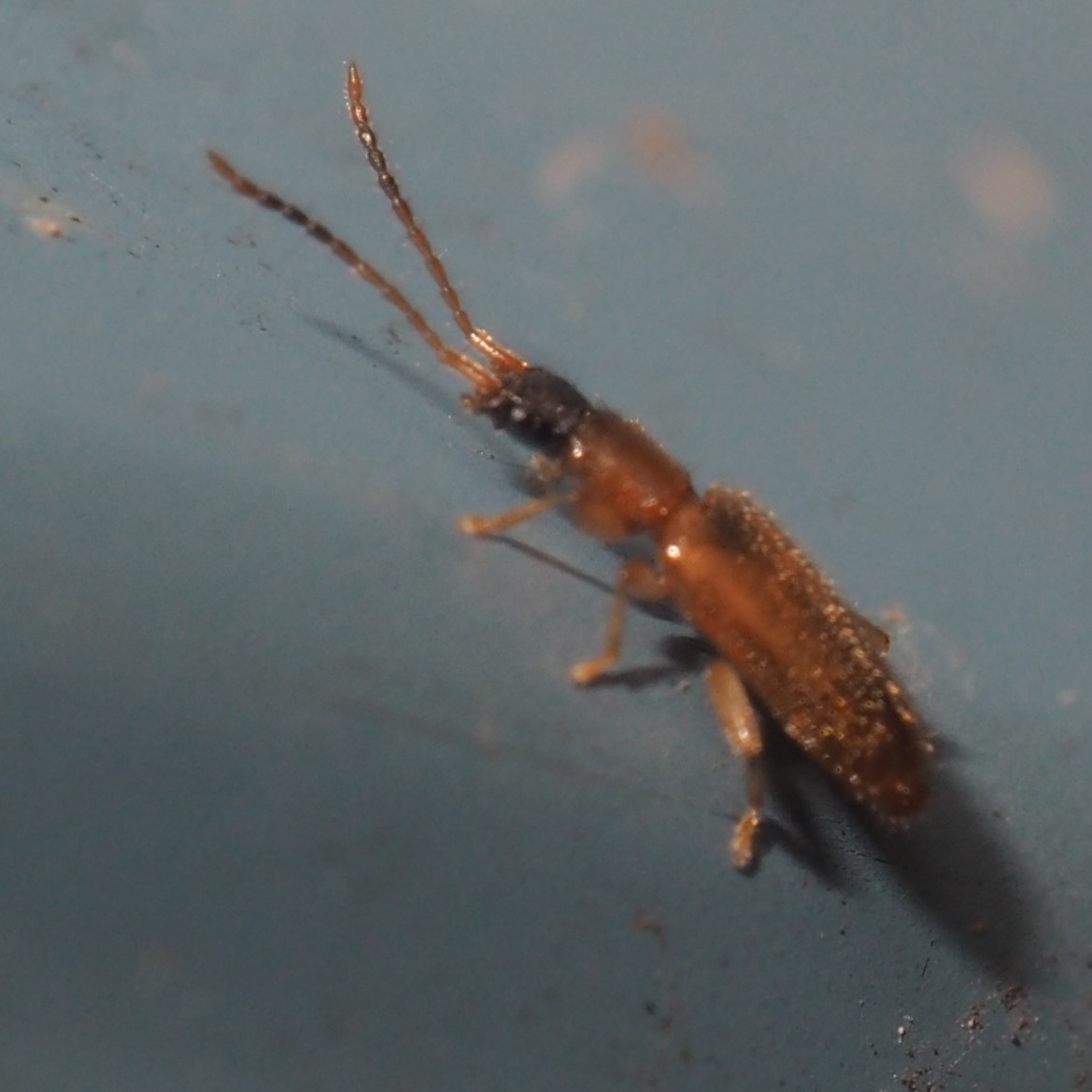
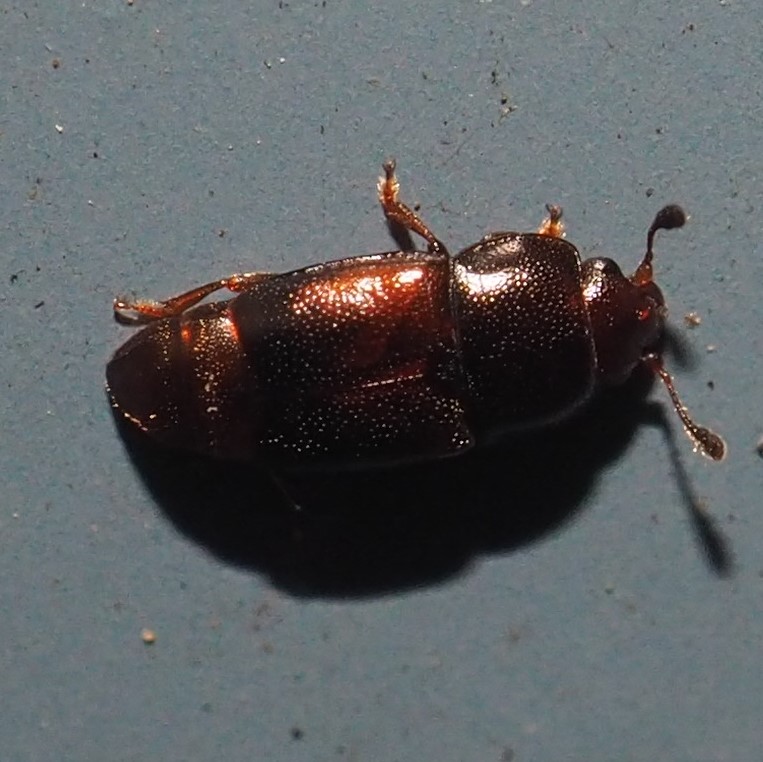
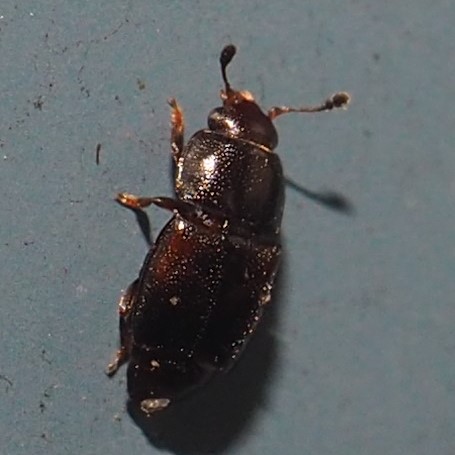
This first one is another Beetle from Saturday's catch. Next is one from the day before. It is really quite hard to tell some from others. Boris (@borisb of iNat) says that you have to peek at the naughty bits before you can pronounce the identity of some of these things. And of course, I'm too ladylike to do that!
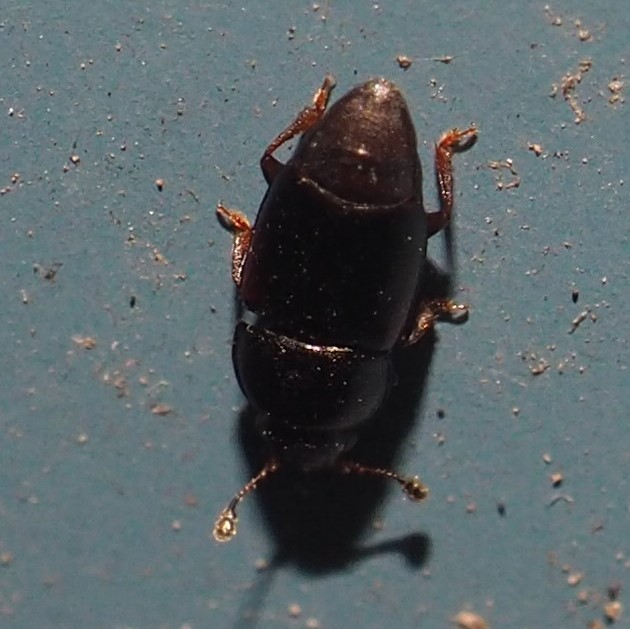
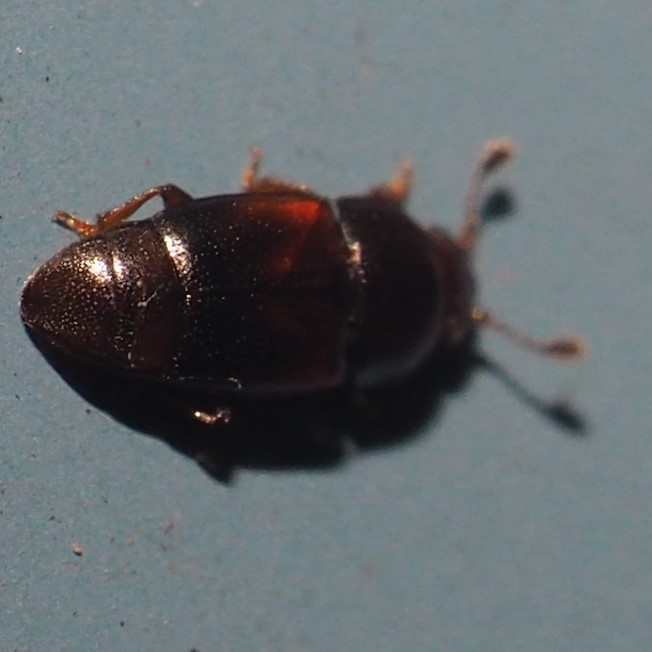
Meanwhile yesterday I saw TWO little red Beetles. Here in positions 1 and 2 is one of them. Ten minutes after spotting the little red Beetle, I saw it again (picture 3), but now I am pretty sure this one is different. Too bad we have to get the word from on high to make sure.
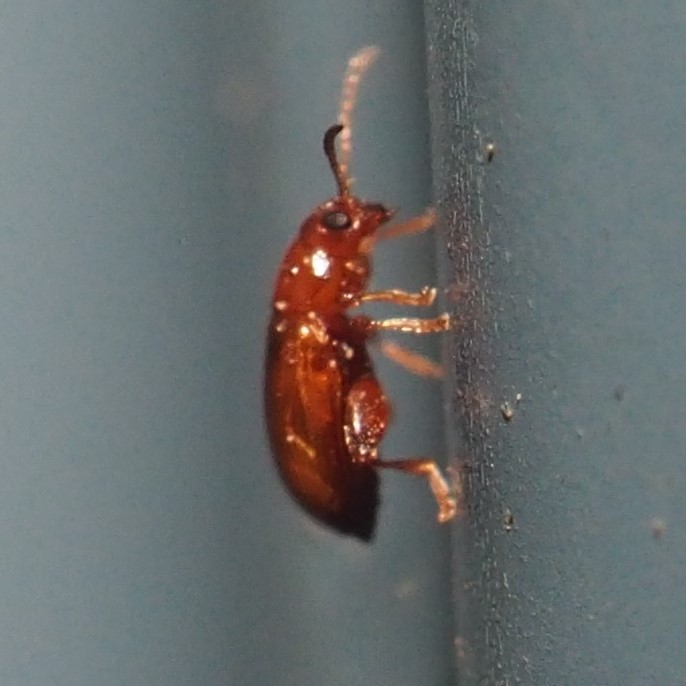
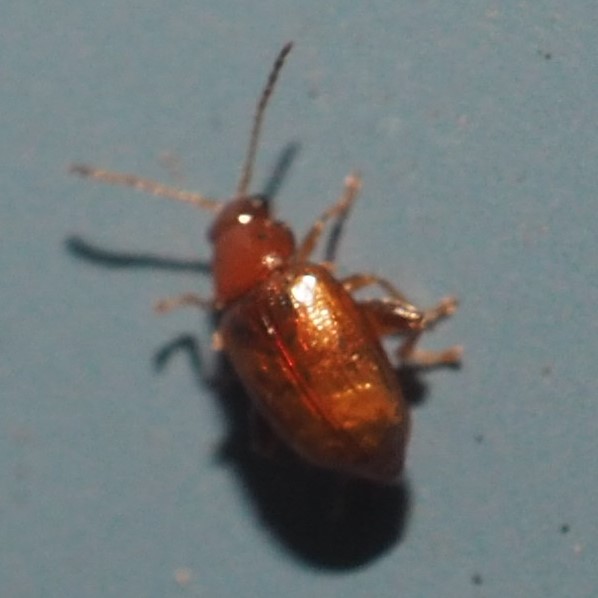
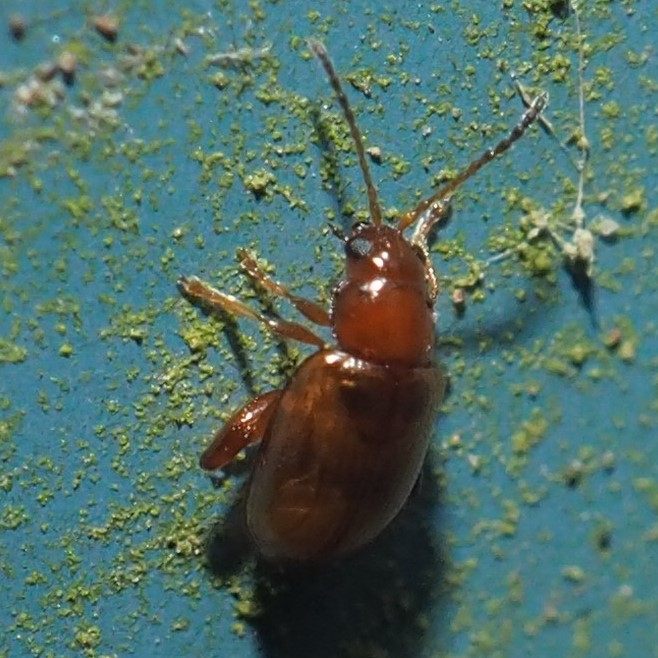
Now we can move on to the Bugs. Assassin Bugs, that is. Do you remember that in Michigan we have two species under genus Zelus? Well, we do, but usually we see the red-eyed one (picture 1), Zelus luridus. Here it is, in the pale green color it gets its name from. Second it is in a mild reddish disguise. But yesterday, not too far from the one in picture 2, I discovered the OTHER Zelus Bug, namely Z. tetracanthus. Now it's really good to be able to see the eye color. This one (pictures 3 and 4) has GREYish eyes. Well, at least they aren't clearly red, as in Z. luridus.
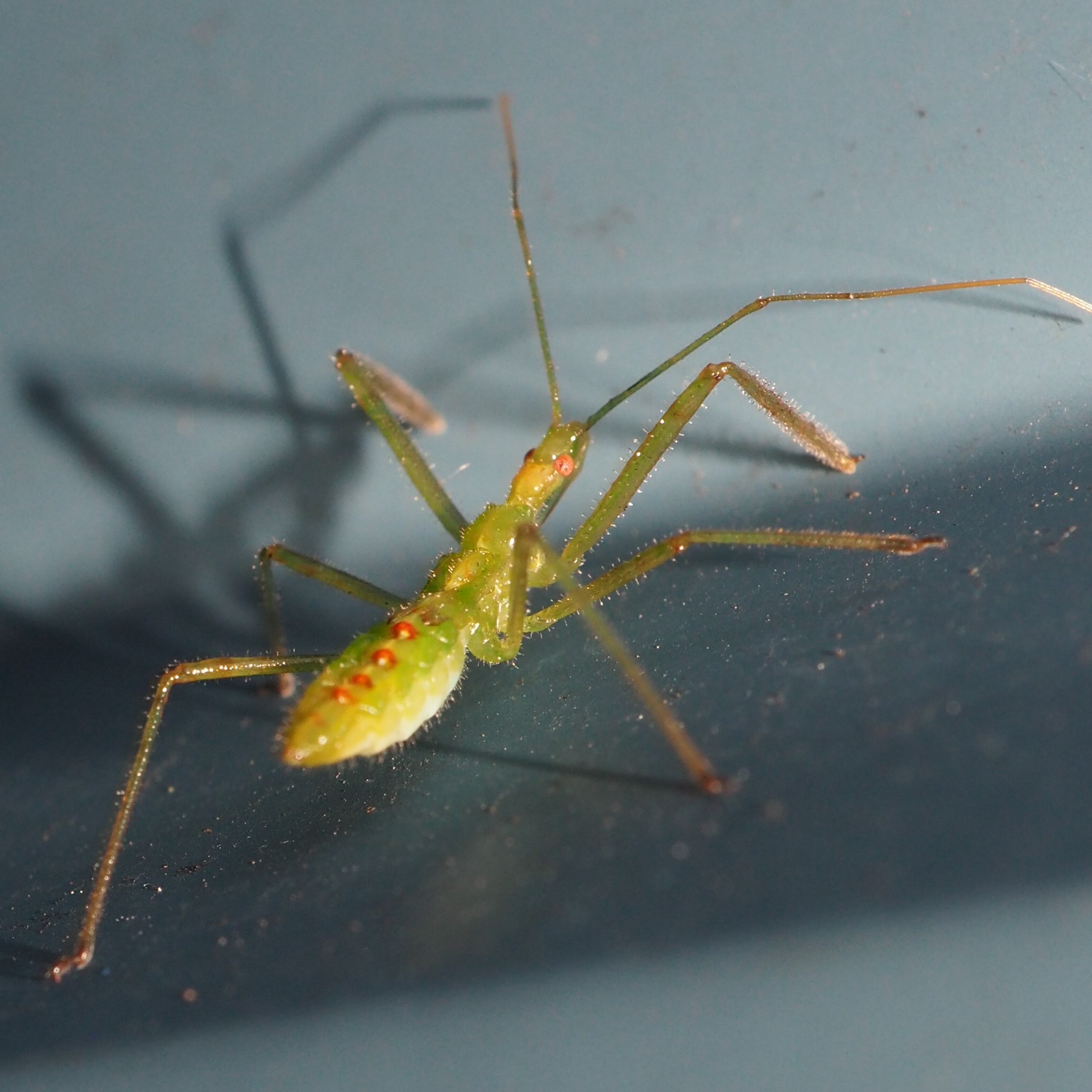
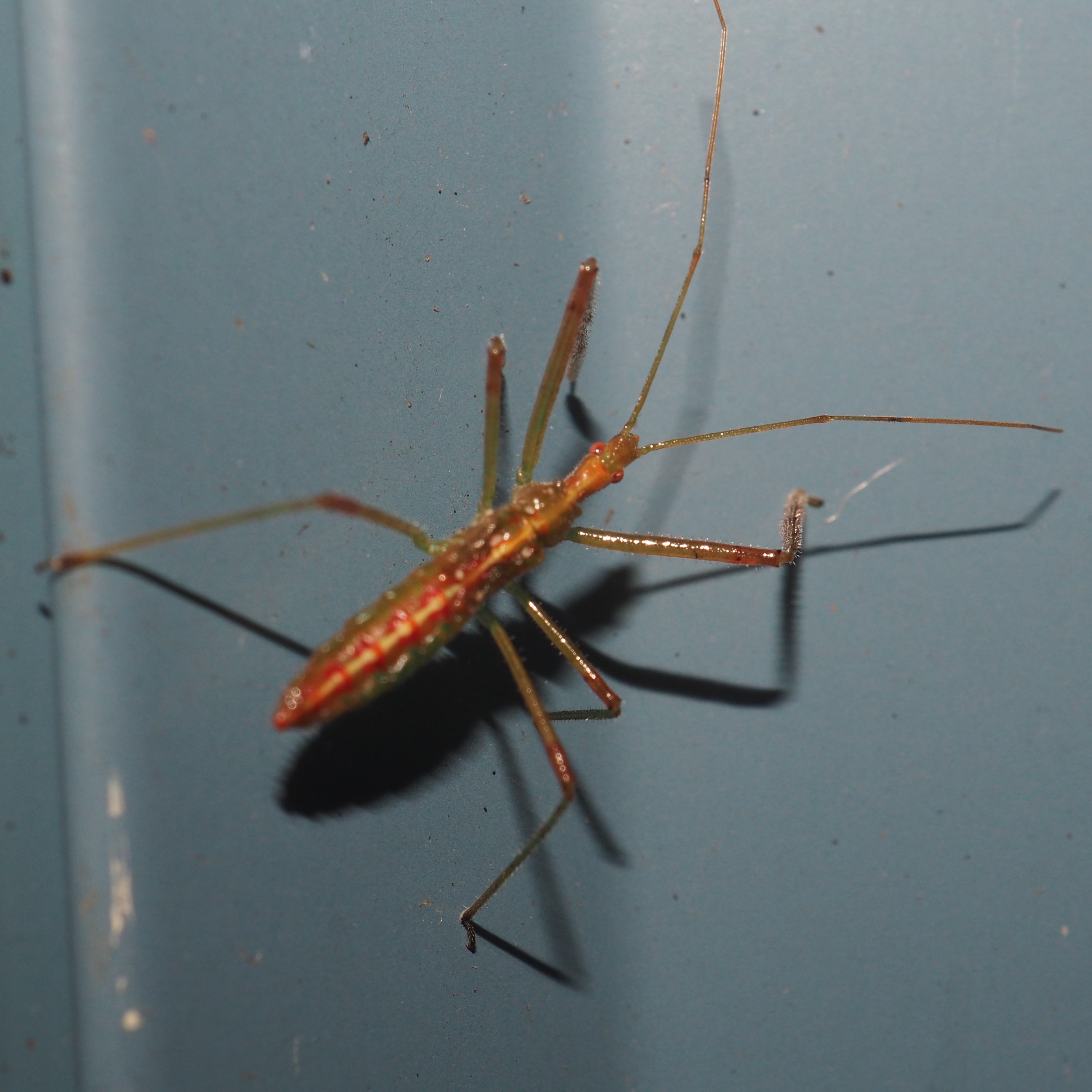
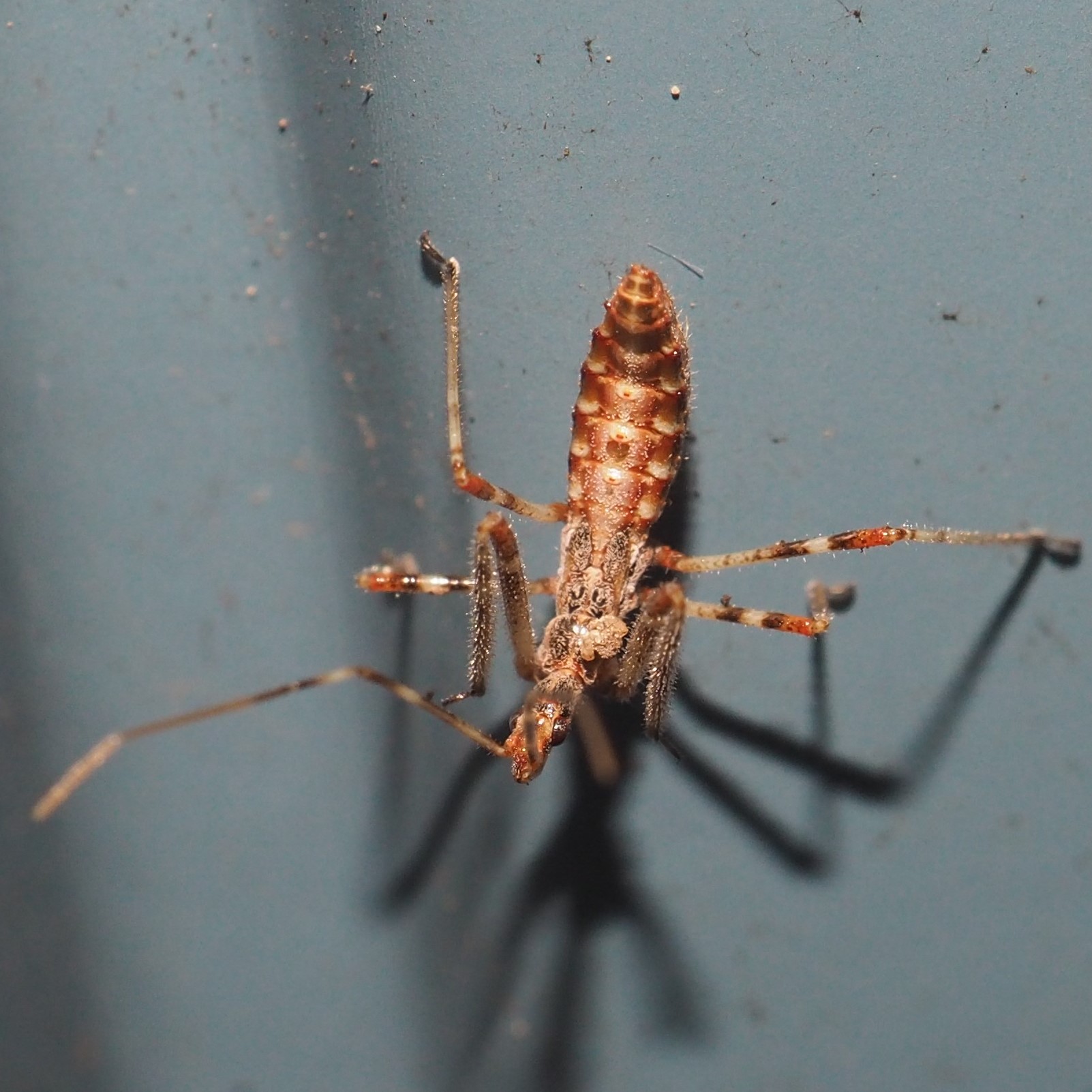
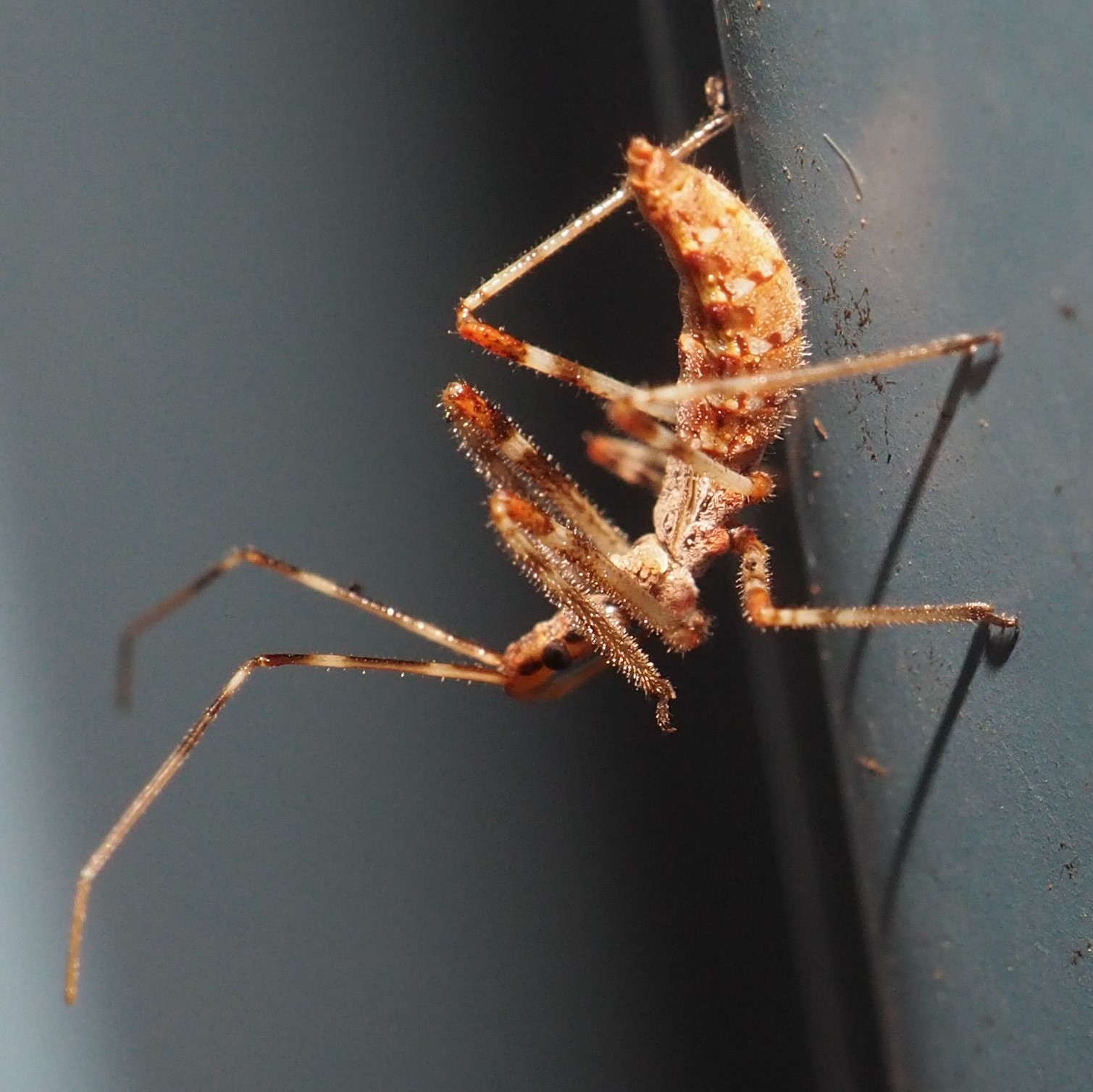
So we move on to see what kind of Leafhoppers we can see here at what is near the end of their season. Here is the magnificent Erasmoneura vulnerata. You probably can't see that it is only about 1 or 2 millimeters long, which makes its lovely color patterns all the more amazing. This week we only saw a few different species of leafhoppers, and in fact all the rest of these are from only one genus, Eratoneura. Here is the garden-variety Eratoneura - You might by now already be able to pick it out by its basic pattern. Note: it doesn't matter if the pattern is in red or yellow!

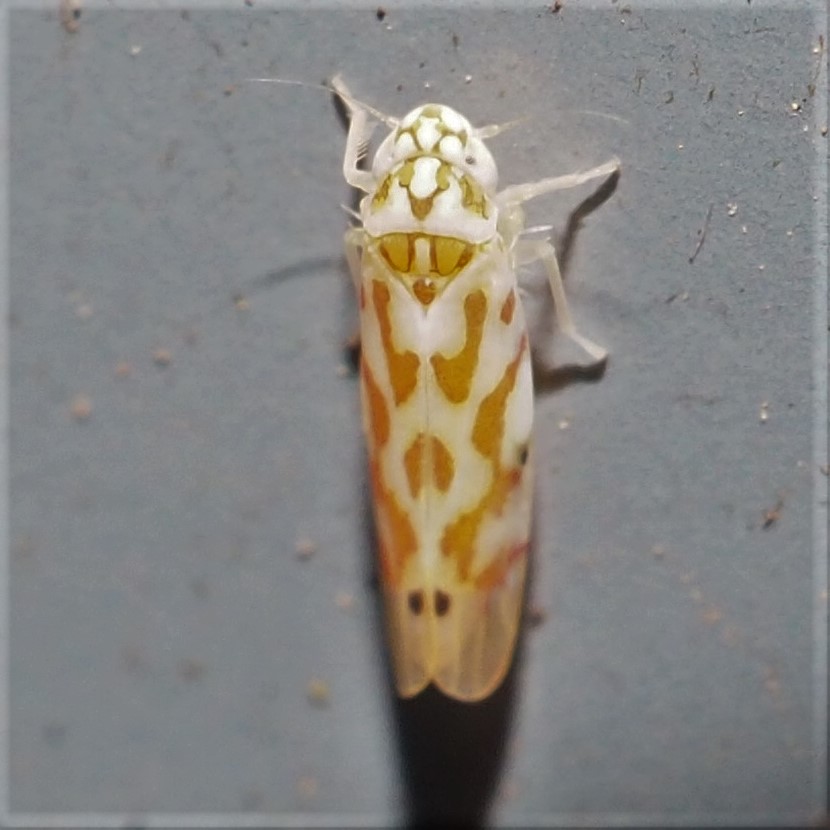
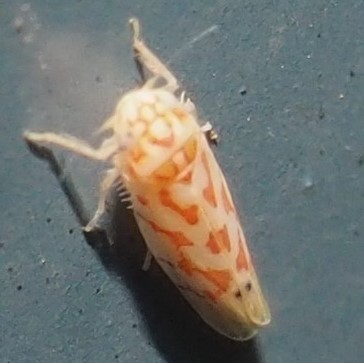
I was talking to @nomolosx on iNat about this. These variations on the basic Eratoneura are some that were here only a few days different last year. Solomon says that it is true that the brighter color combos tend to come out later in the season. Here are two variations on E. ardens, according to Kyle Kittelberger. Third is E. affinis, which I saw only a day or so off from now last year.
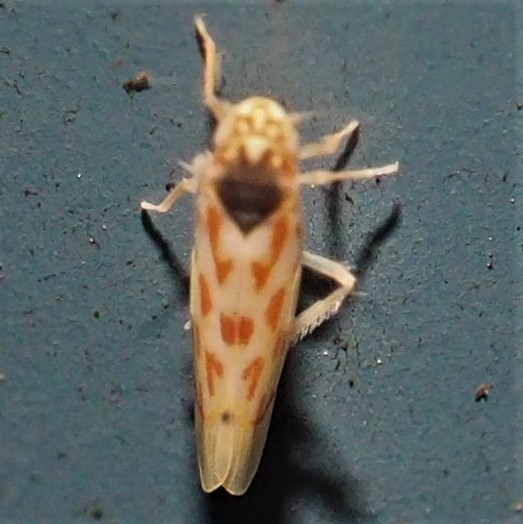

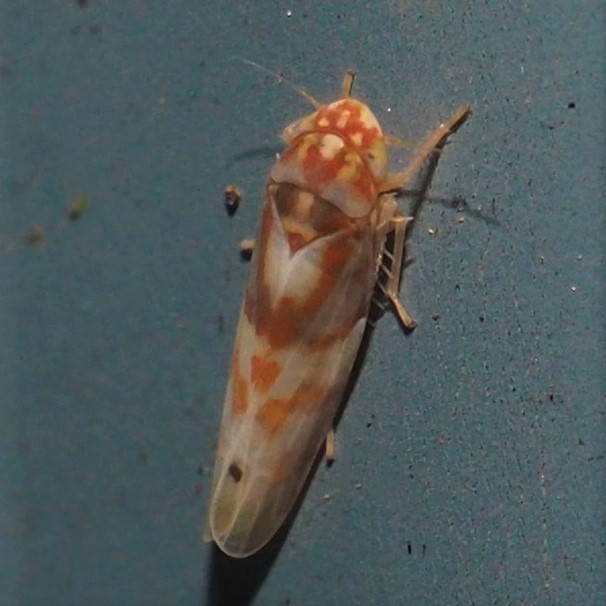
Here are a couple of repeats from previous weeks: First is a Western Conifer Seed Bug, a little dusty - we found it in the upstairs hallway. Then comes a Stink Bug in genus Euschistus. Third is a little Stilt Bug, named for its LOOONG legs.
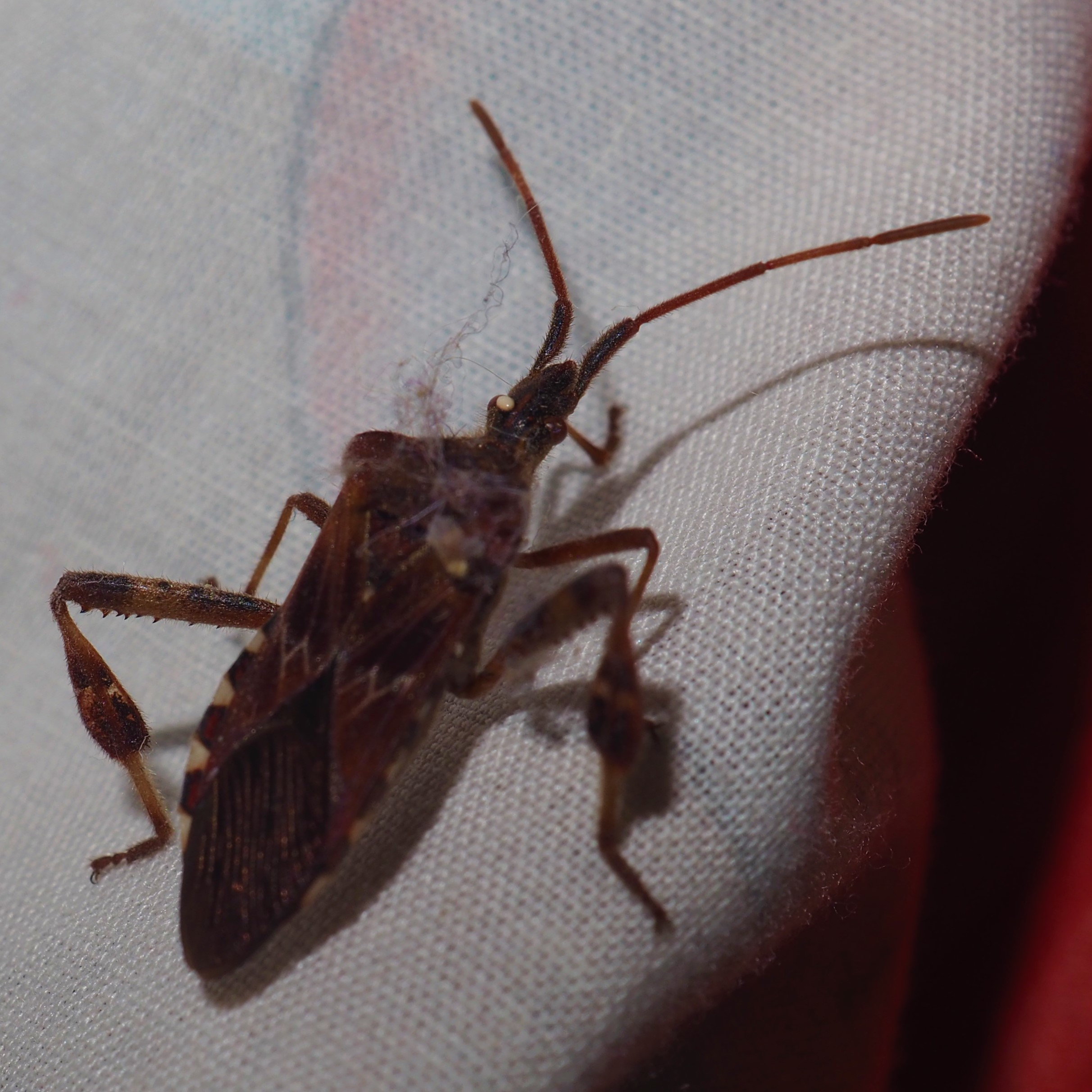
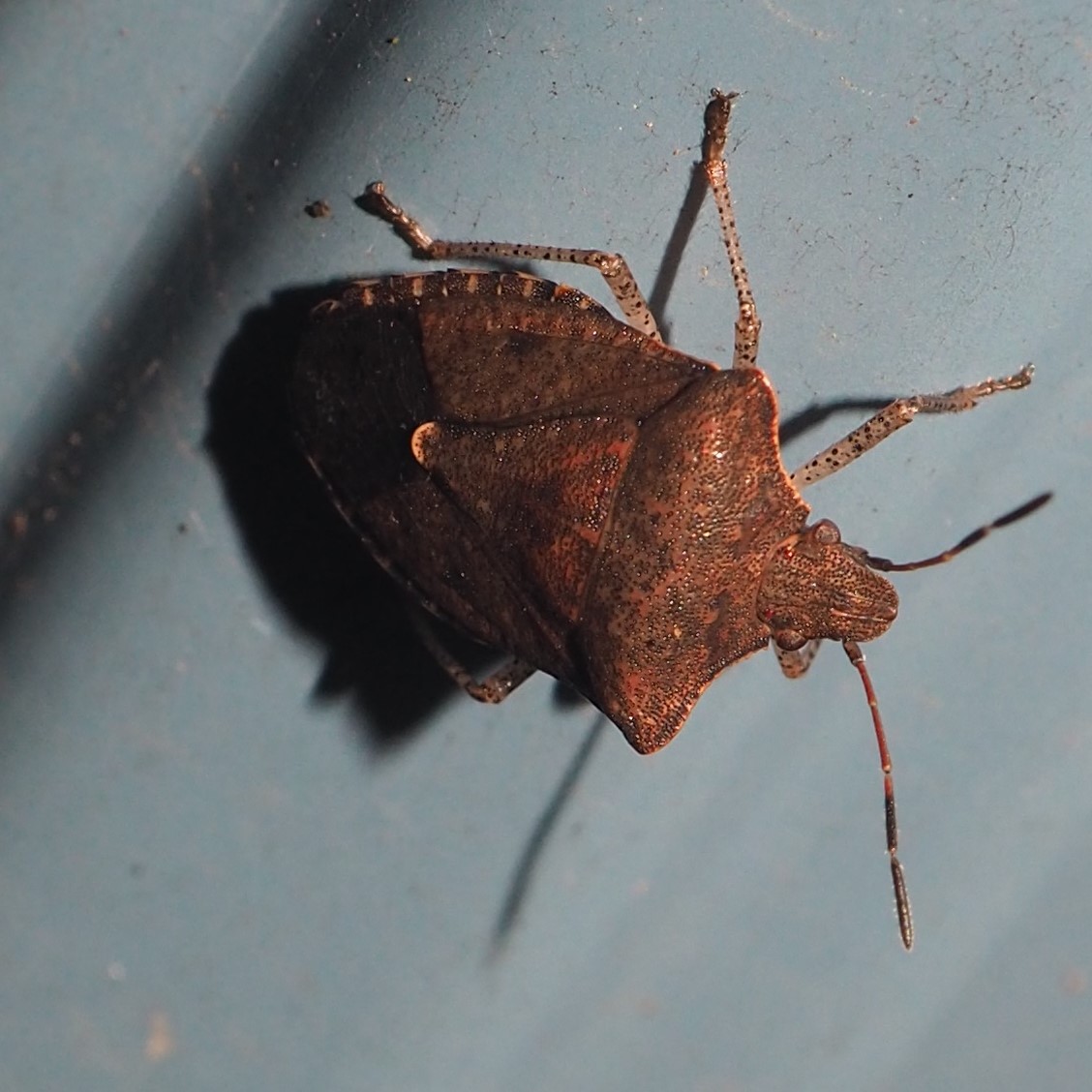
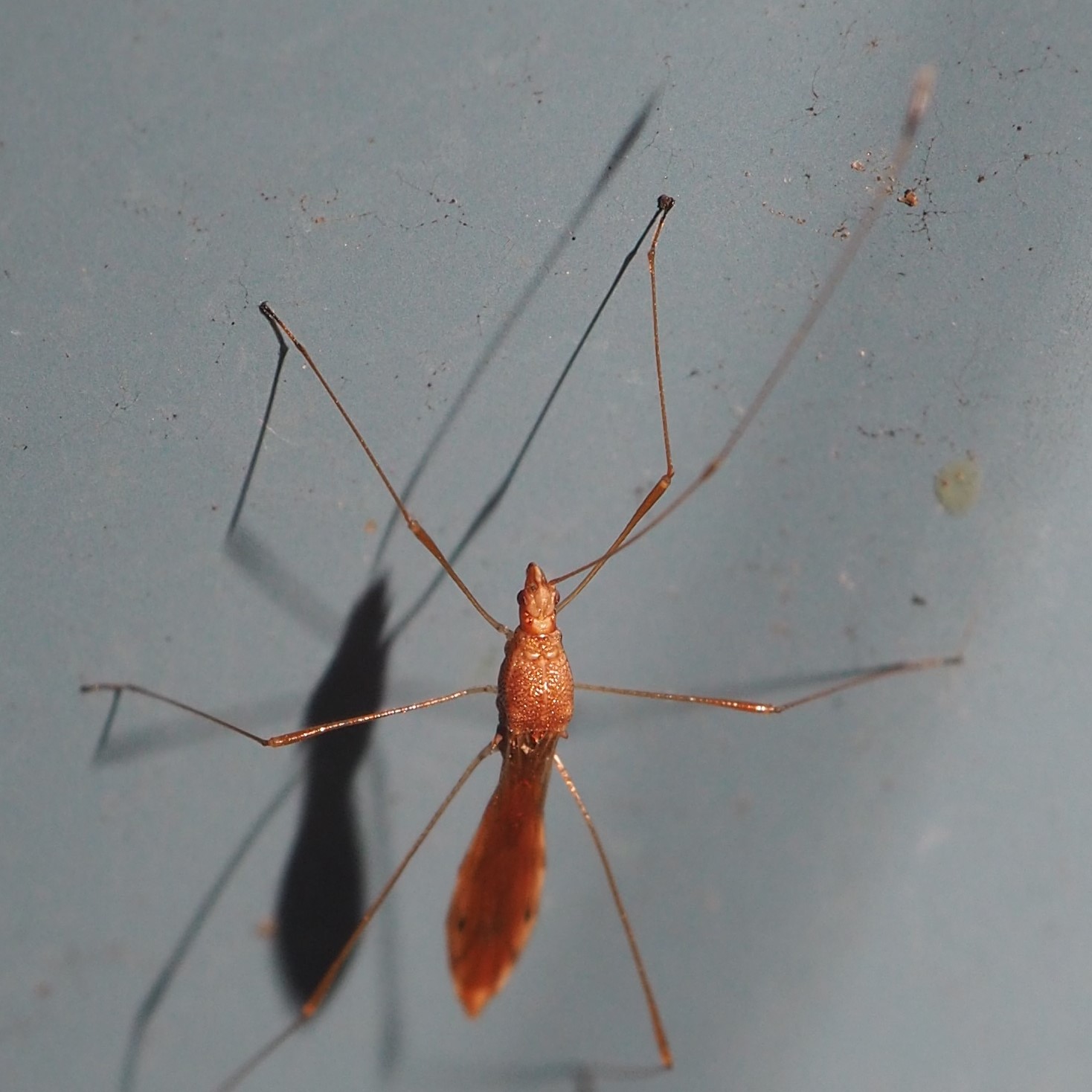
Meanwhile, out in the dying Goldenrod, there are still a few more Bugs. First is a Lygus Plant Bug. Then what looks like a sidewise view of our old friend, Drymus unus. And then a Bug that got identified as belonging to genus Pagiognathus.
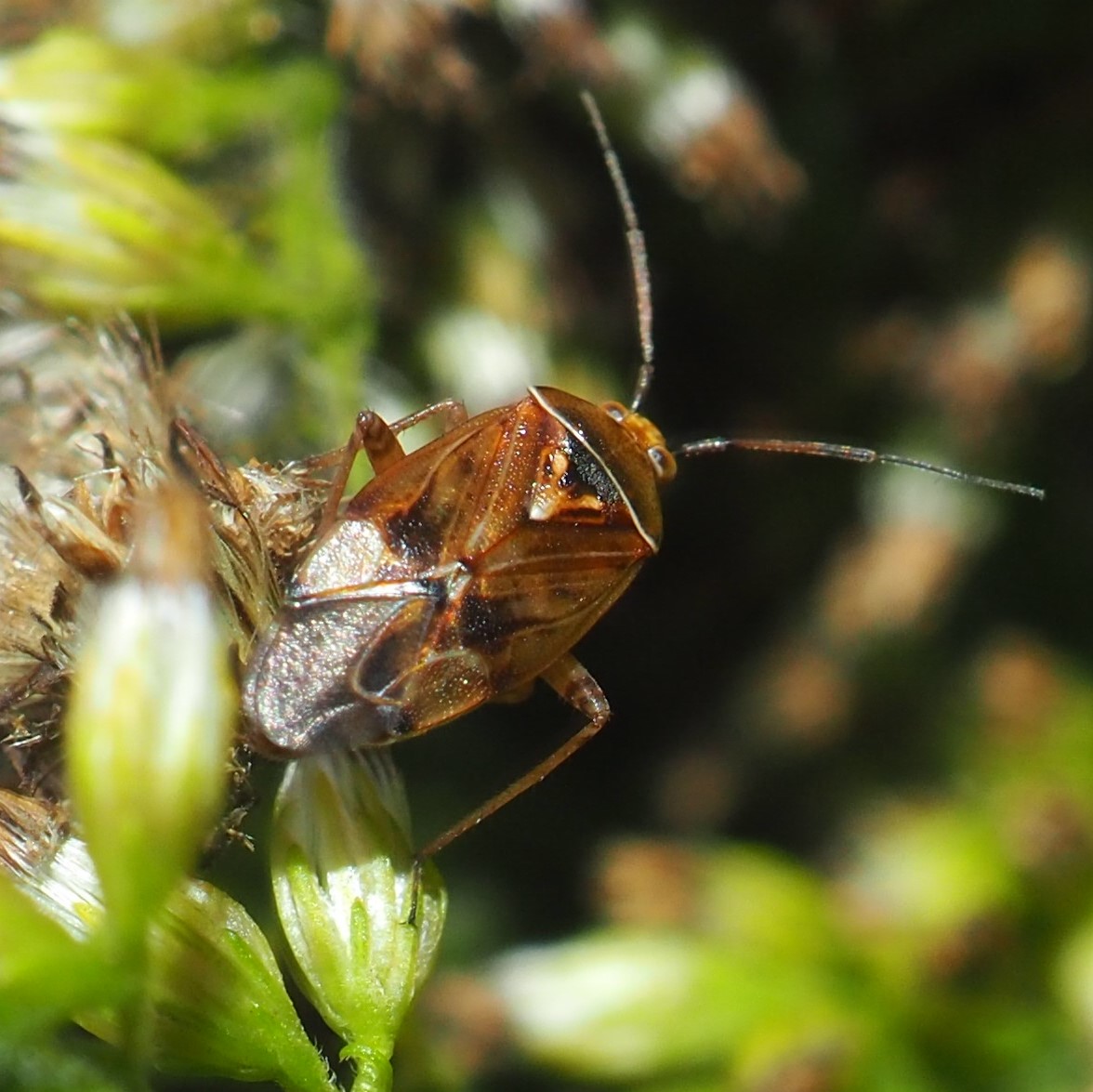
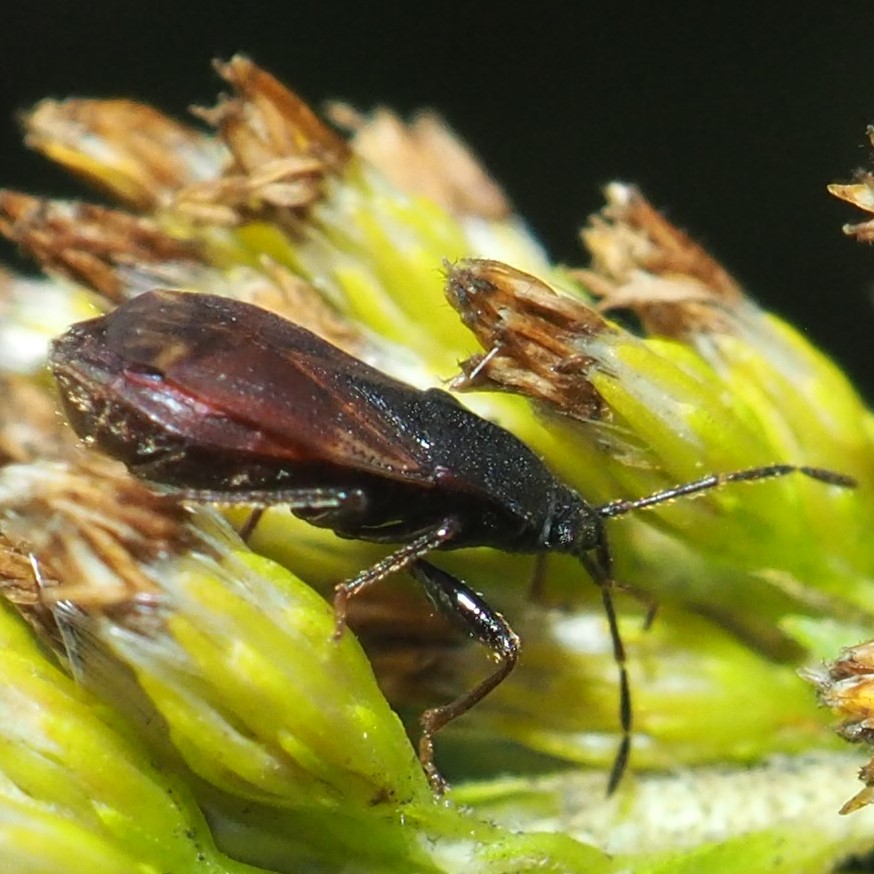
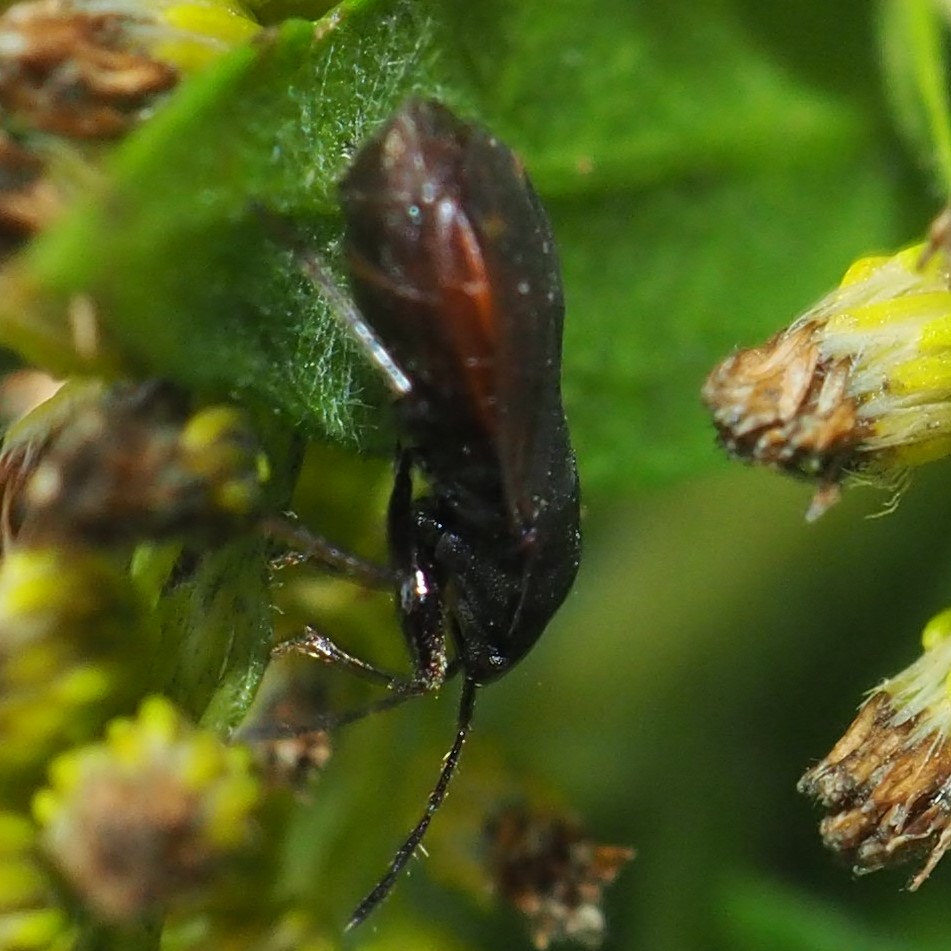
Here are a few outliers. First and second are European Earwigs. The little teardrop-shaped bits are the giveaway. Third is a tiny Ground Cricket that keeps daring me to step on it while I walk around the Pond.
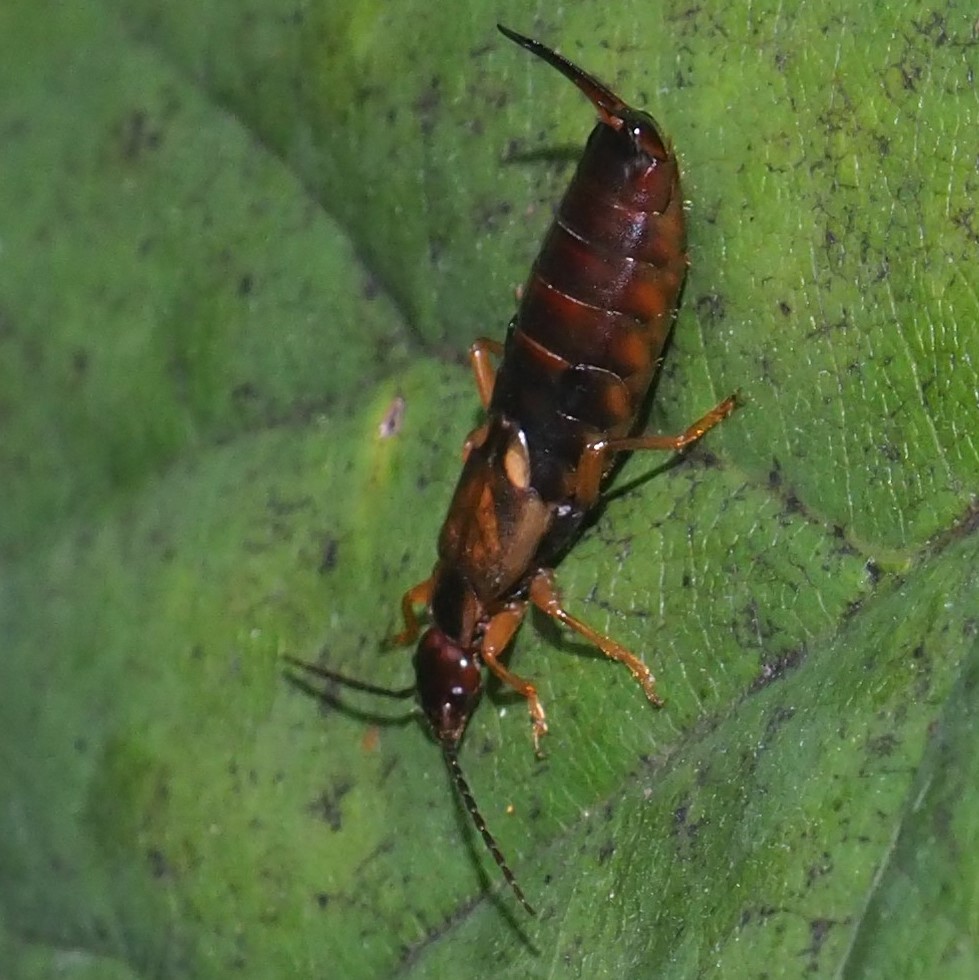

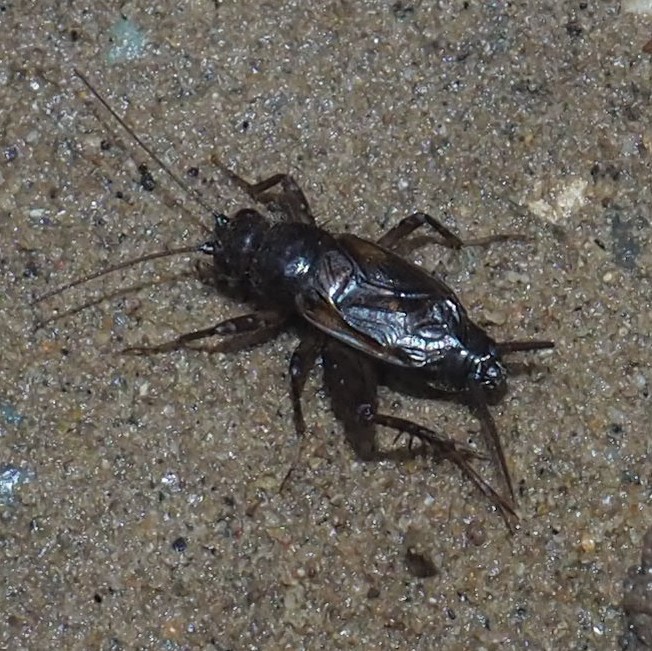
We now move into the Flies. They really weren't as easy to find this week, but here we try to categorize them.
First is at least a relative of the Dung Flies. Then comes a Bathroom Moth Fly, and a Mystery Fly. Aside: Does the Moth Fly seem to be in 3D to you? It does to me. Edanko of iNat just identified the Mystery Fly as an Acalyptrate Fly.
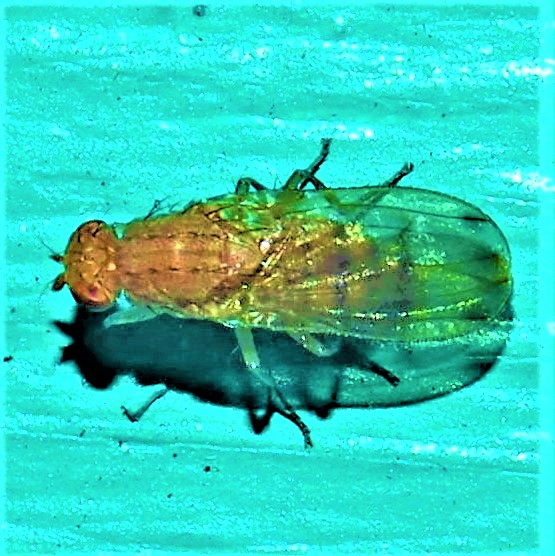
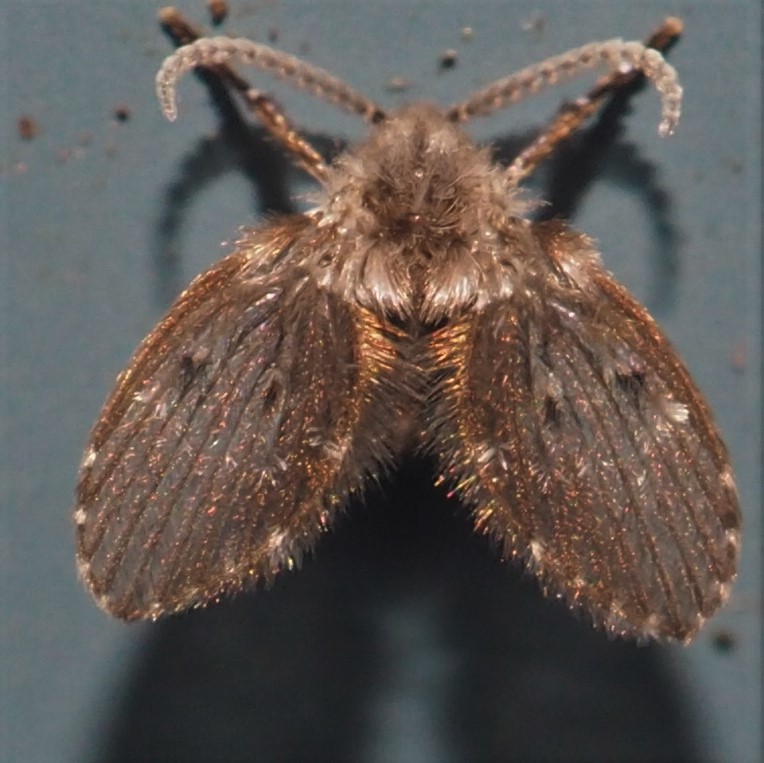
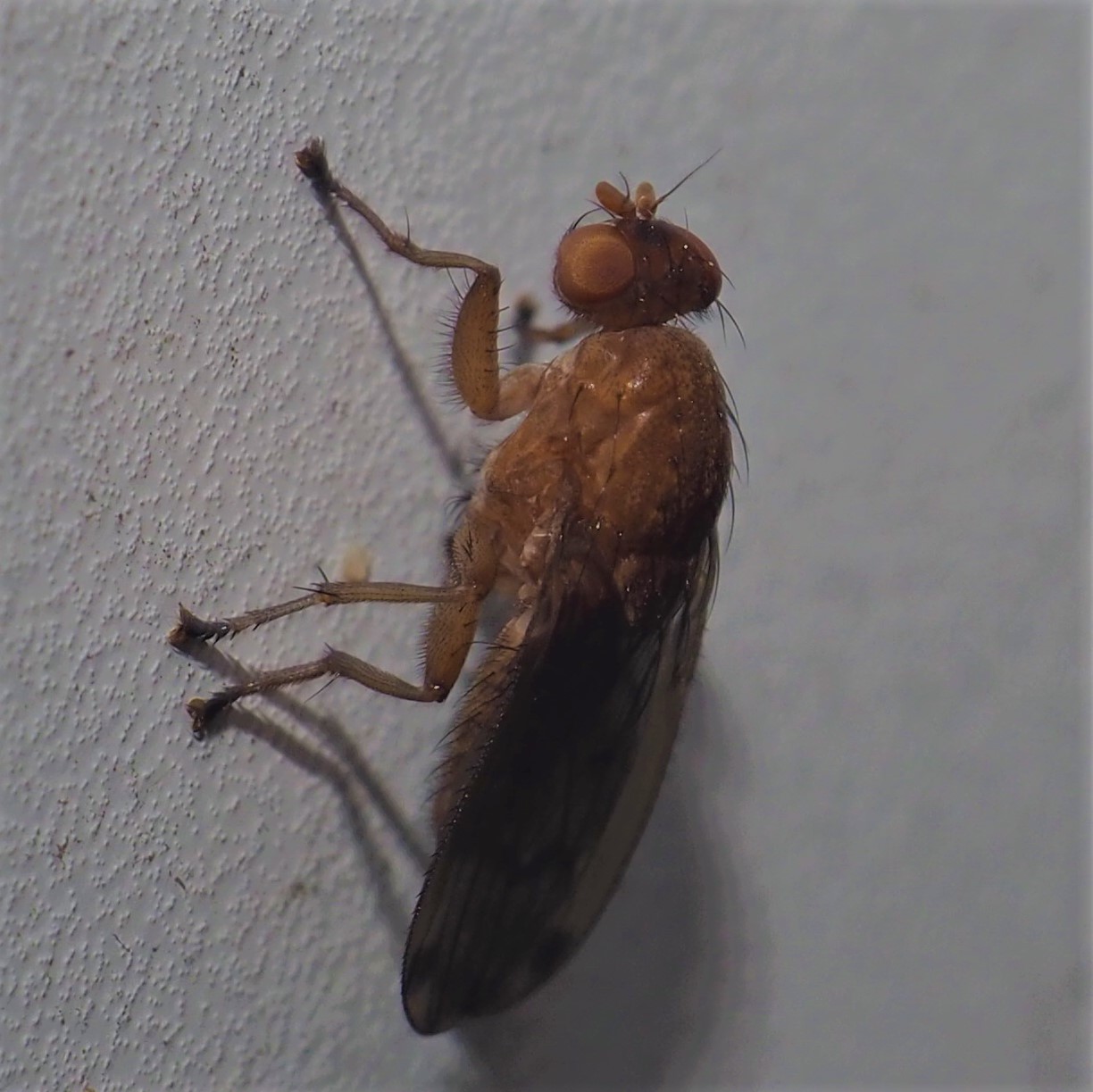
Here are a few Mosquitoes. First is an Asian Bush Mosquito, then two mystery Mosquitoes, both males. (They have very fluffy antennae for one thing.) Actually the two may be the same Mosquito.

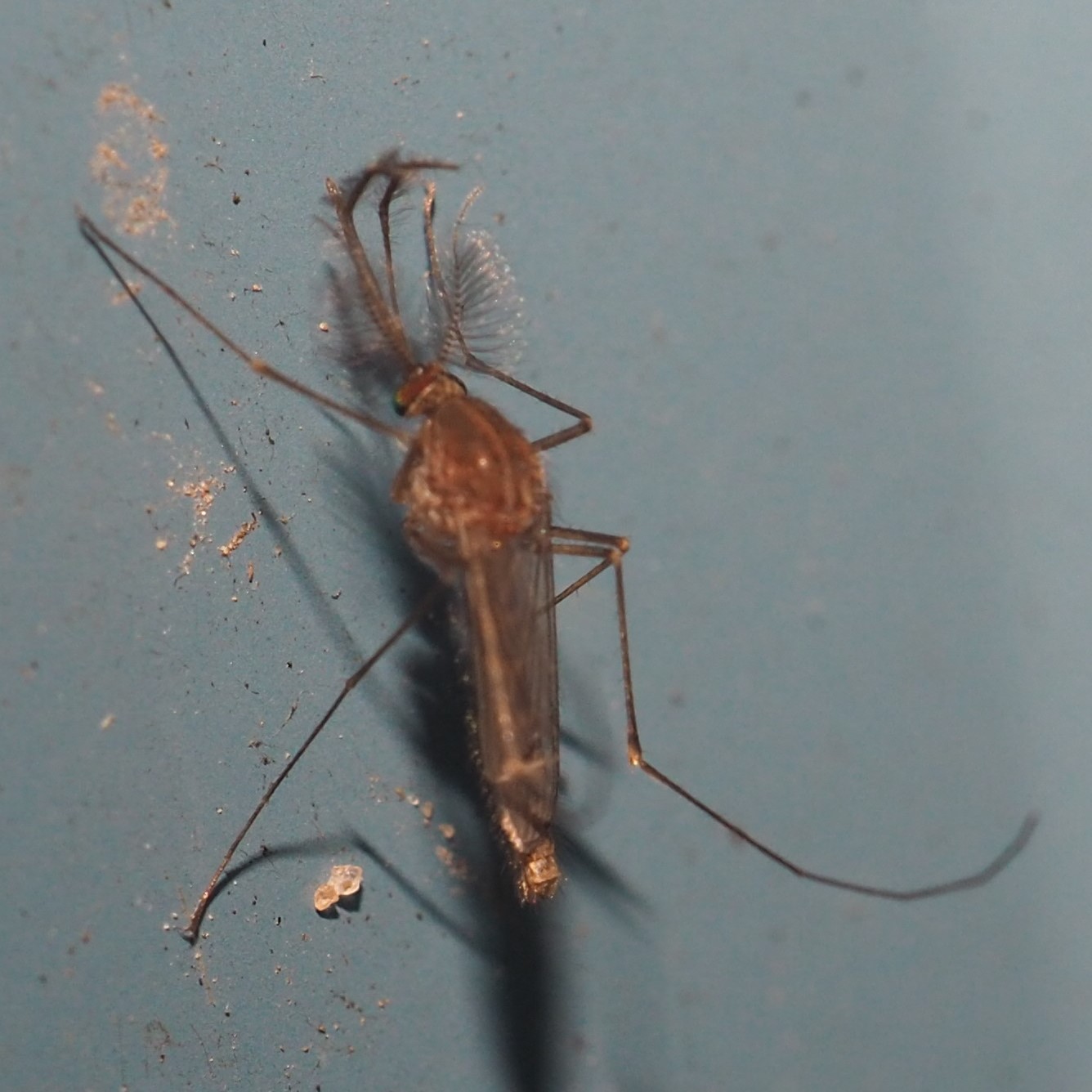
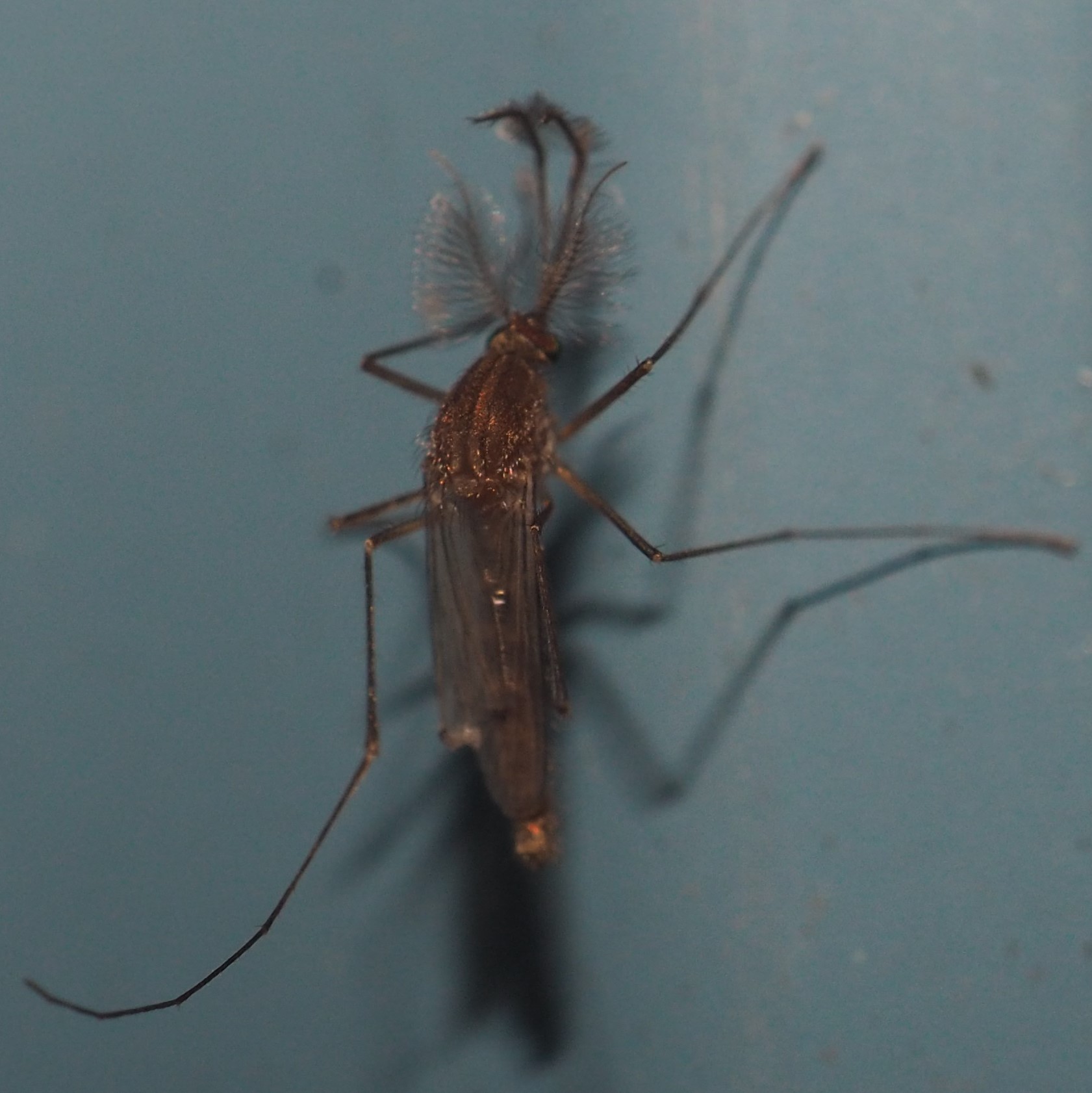
Let's see. We have at least one Moth and one Butterfly (actually a Skipper). The Moth I had confused with the Stilt Bug for a while. But Charley Eiseman of iNat, who has written a definitive book on Leaf Miners of this country, says this is a Leaf Miner Moth of Genus Cremastobombycia. The Looper (picture 2) is the larva of a Geometrid Moth and this one looks like maybe a tenor recorder. Just because I showed you this Checkered Skipper last week shouldn't keep you from enjoying it this time! I was so happy to see it after several years hiatus!
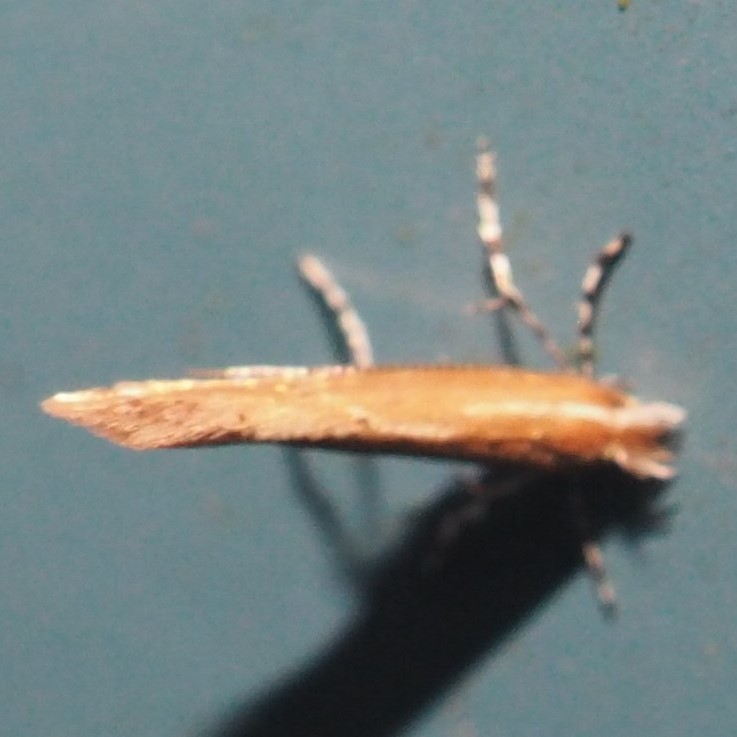
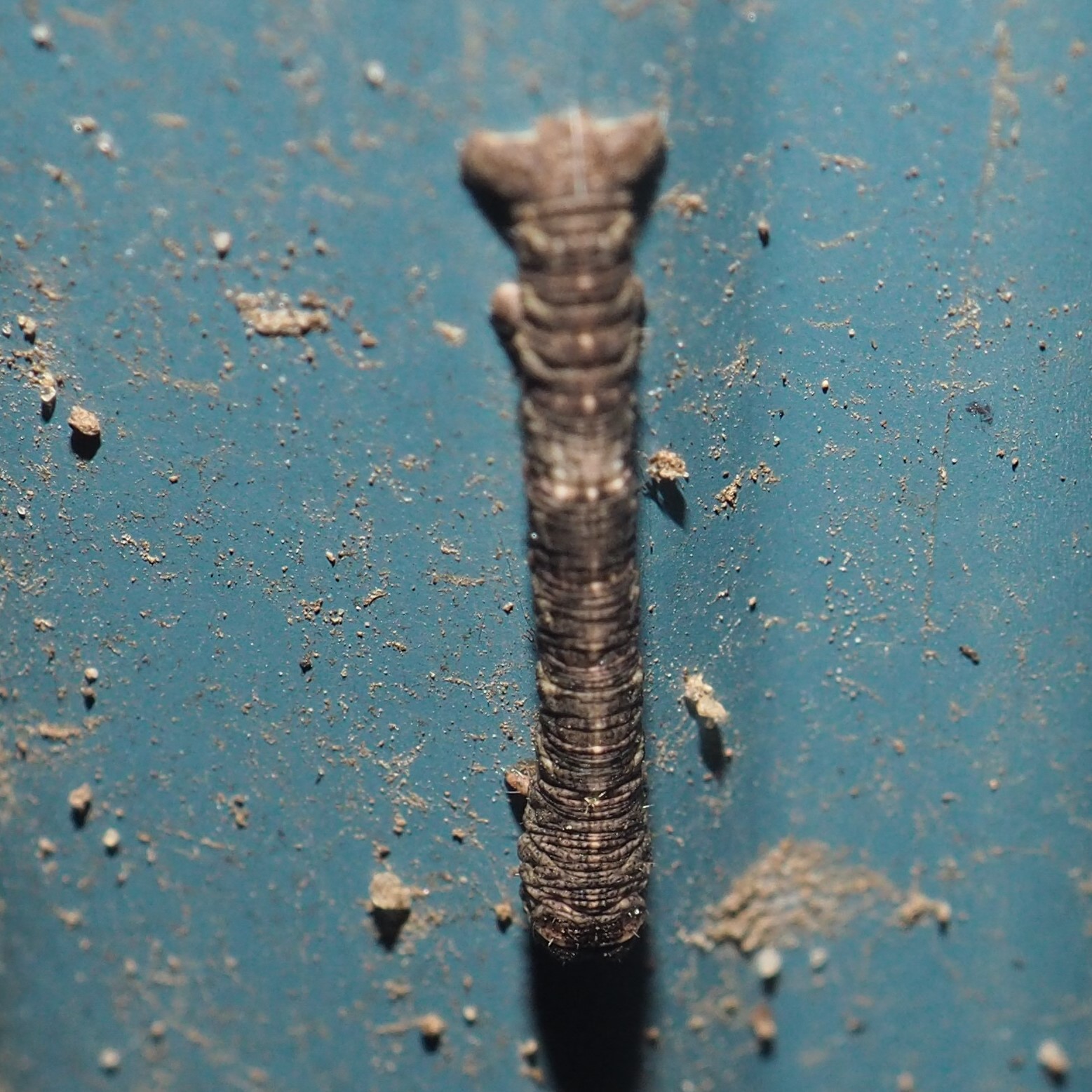
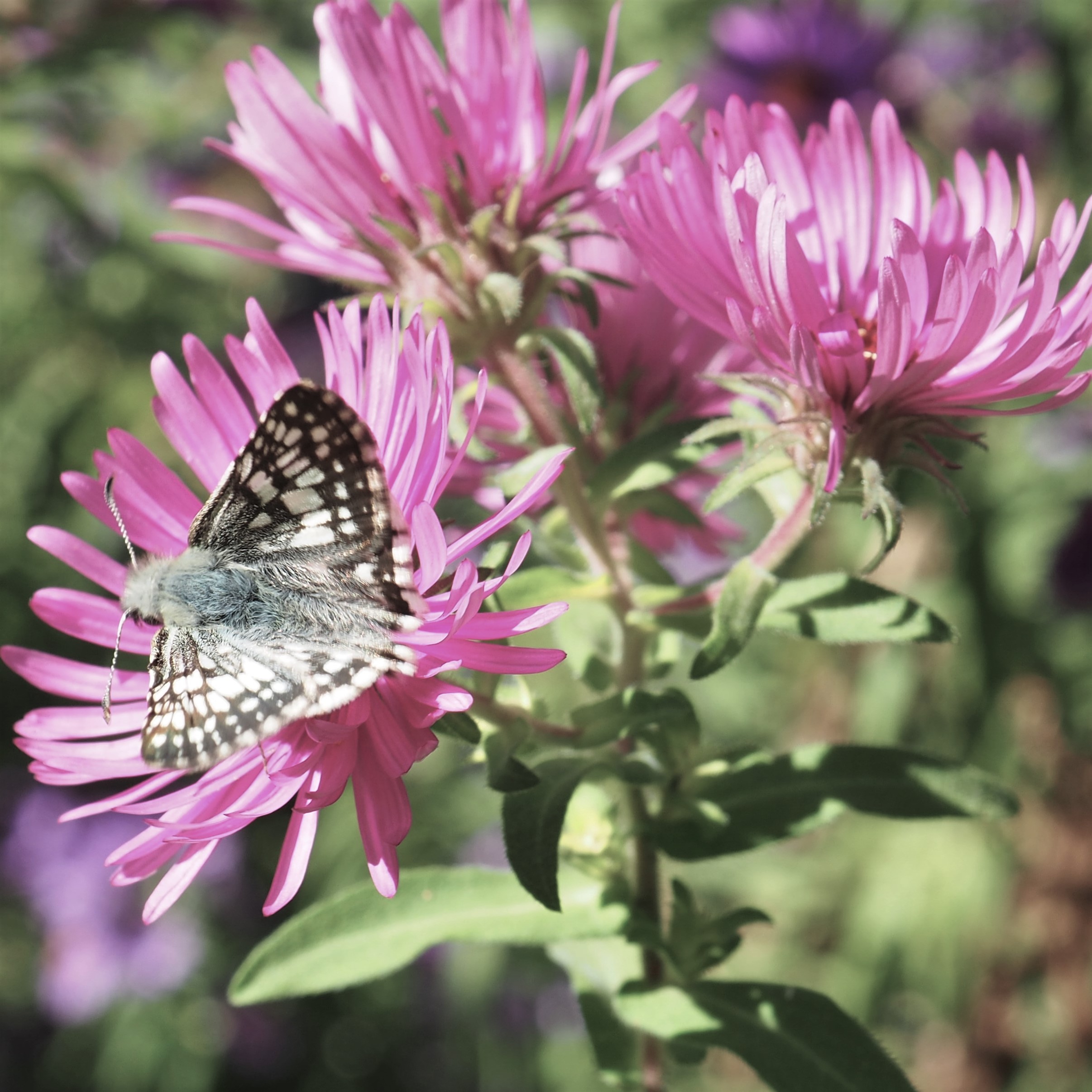
So now how about that walk in the Flowers, if there are any left? Here's that Japanese Anemone again. And can you believe the Asiatic Day Flower is still to be seen? Here's a pink Aster blooming before the latest rain.

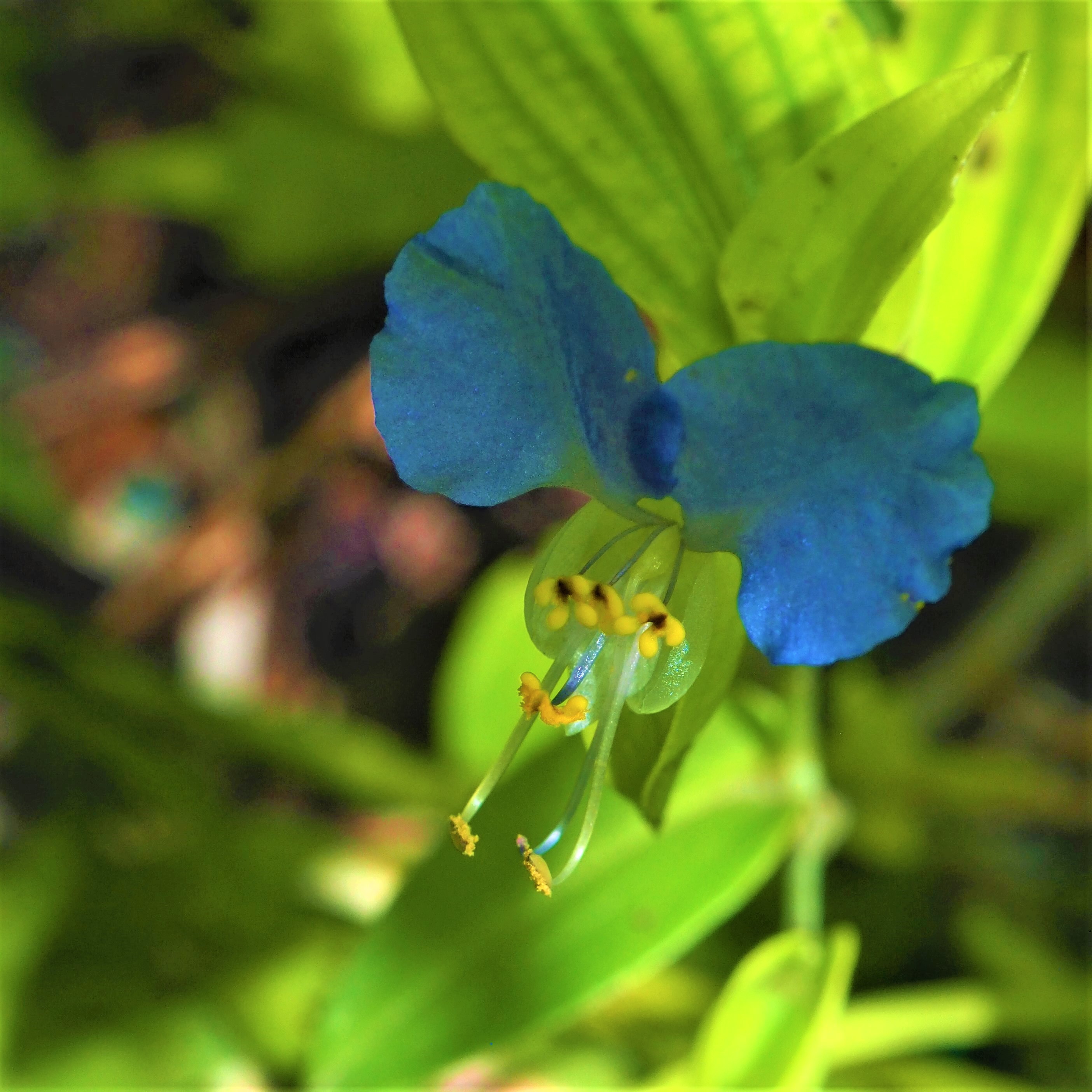

A purple Aster from the same day as the pink one above. Suddenly I'm finding all sorts of little Fleabanes (or are they kinds of Asters too?) like the one with the tiny Ants on its center, enjoying the nectar of this minuscule plant. The newest "Fleabanes" have the shortest habit I've ever seen, not more than a foot off the ground! This last one seems to have a lot of pink centers, maybe mostly after blooming and starting to fold. Some of the leaves seem quite large compared with the size of the flowers.
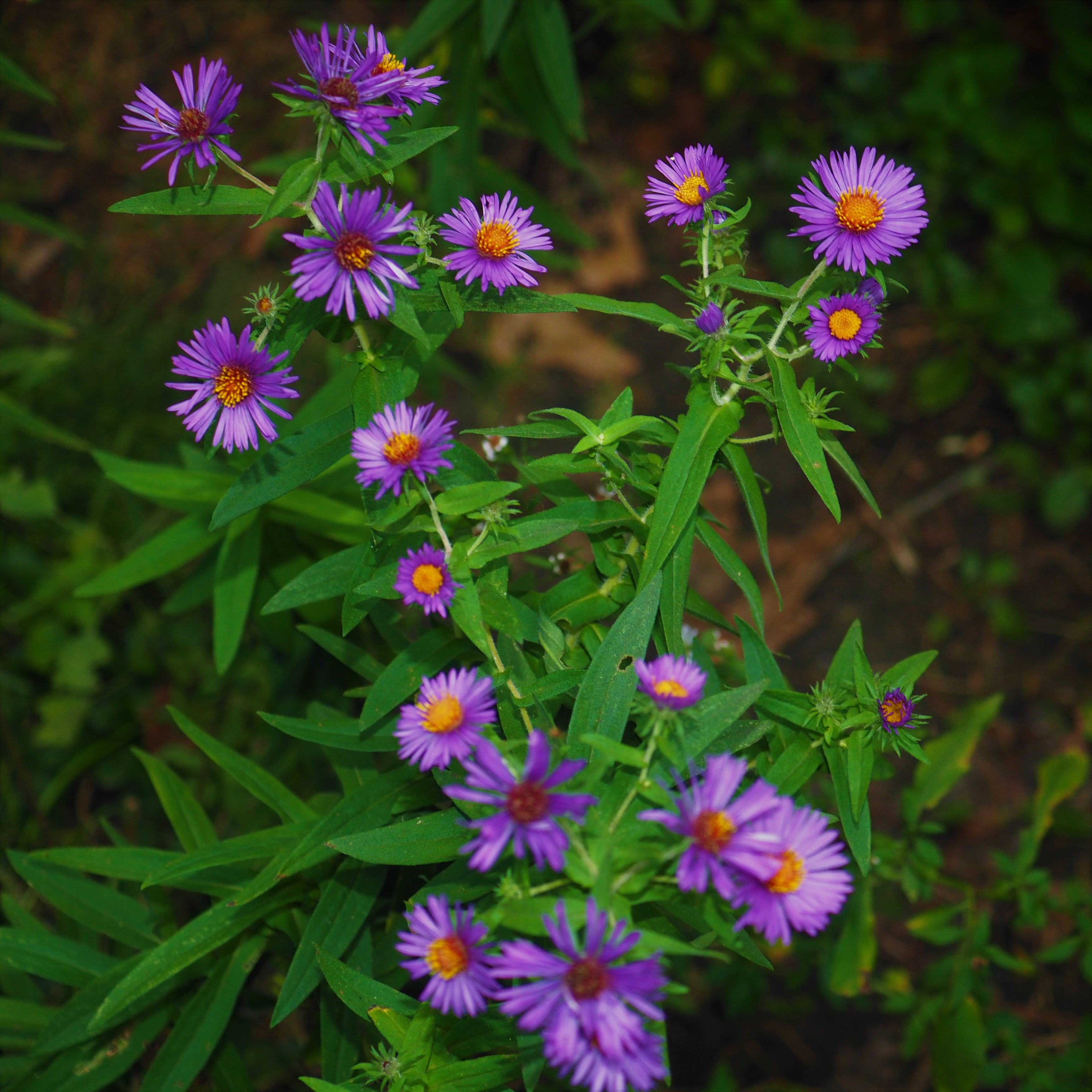
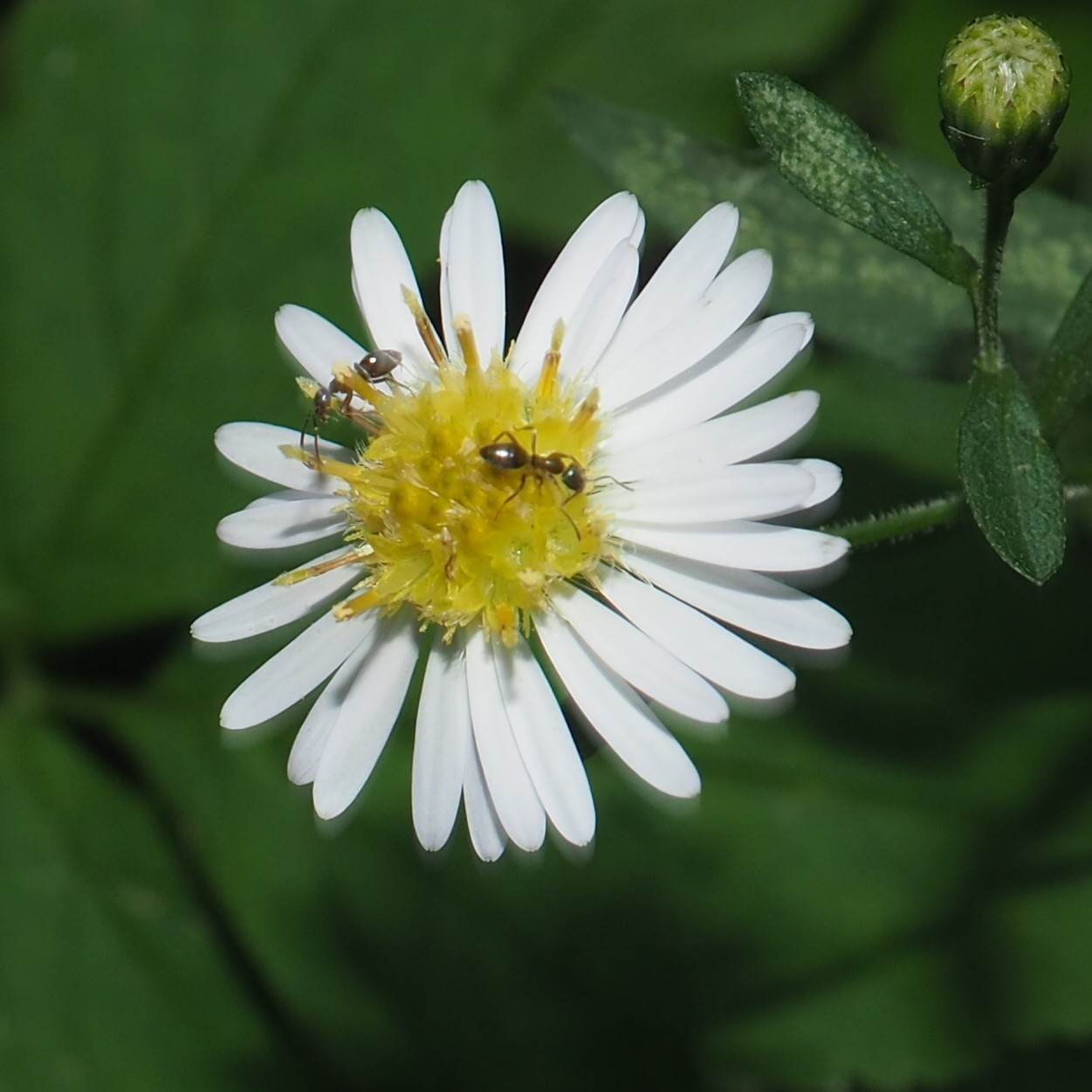
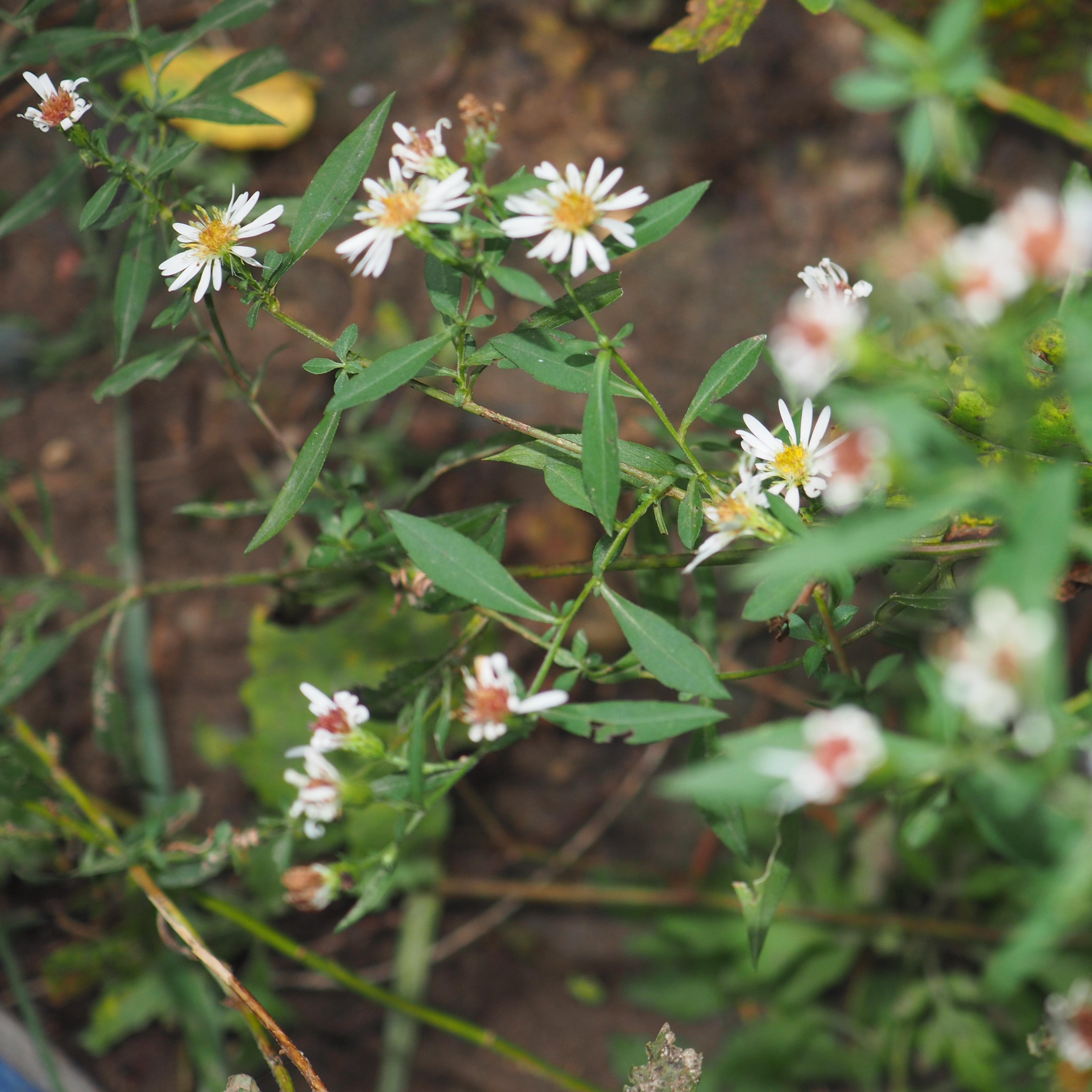
There are not many handfuls of Goldenrod flowers still golden! But let's enjoy this one as Fall goes by. But have you noticed that as the flowers go by, the Leaves become the major focal points of color in our yards and trees? Here's a handful of red flowers developing on the Euonymus (Fire) Bush. And some lower branches of the Maple in front of the house, and redder leaves on the tree at the corner.

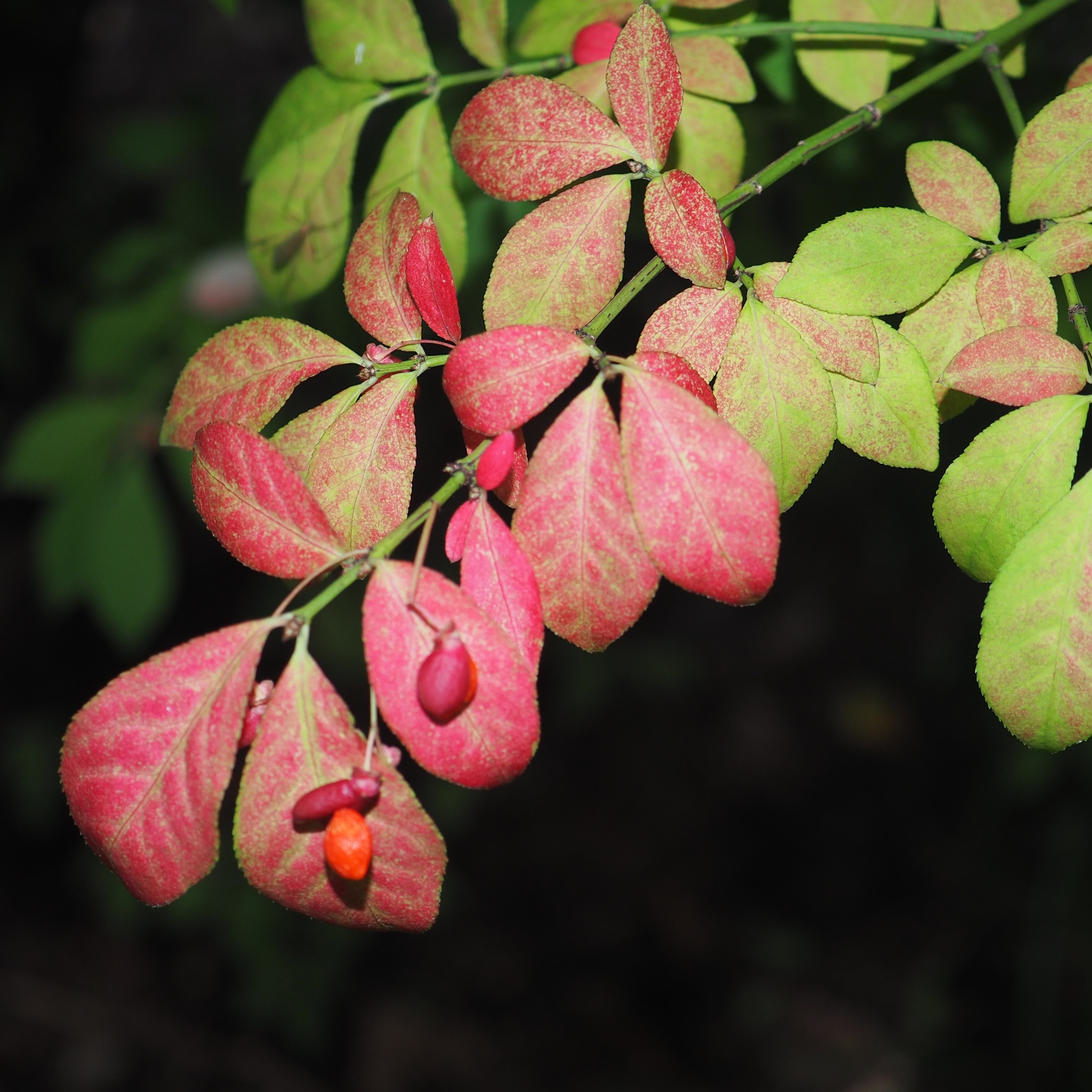
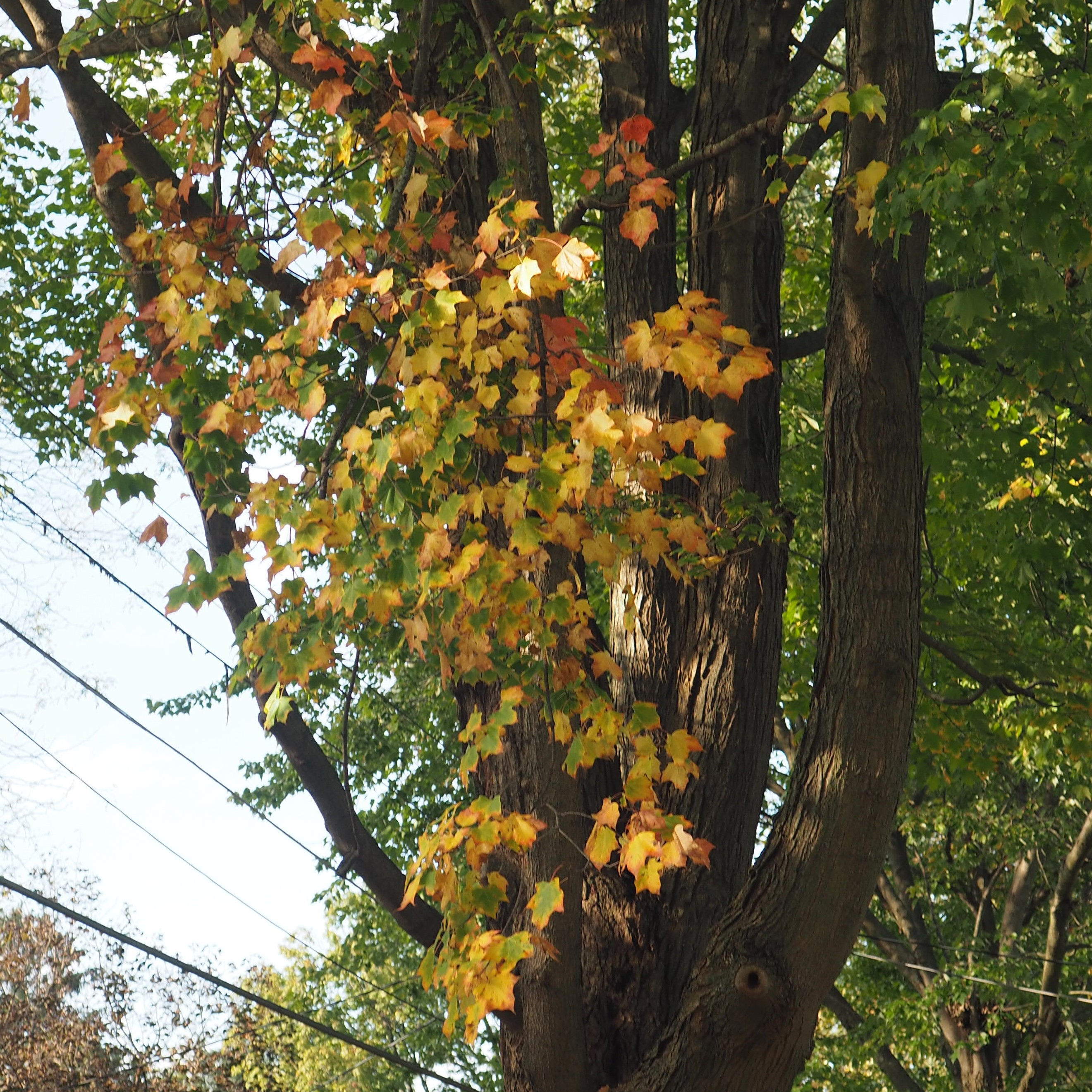
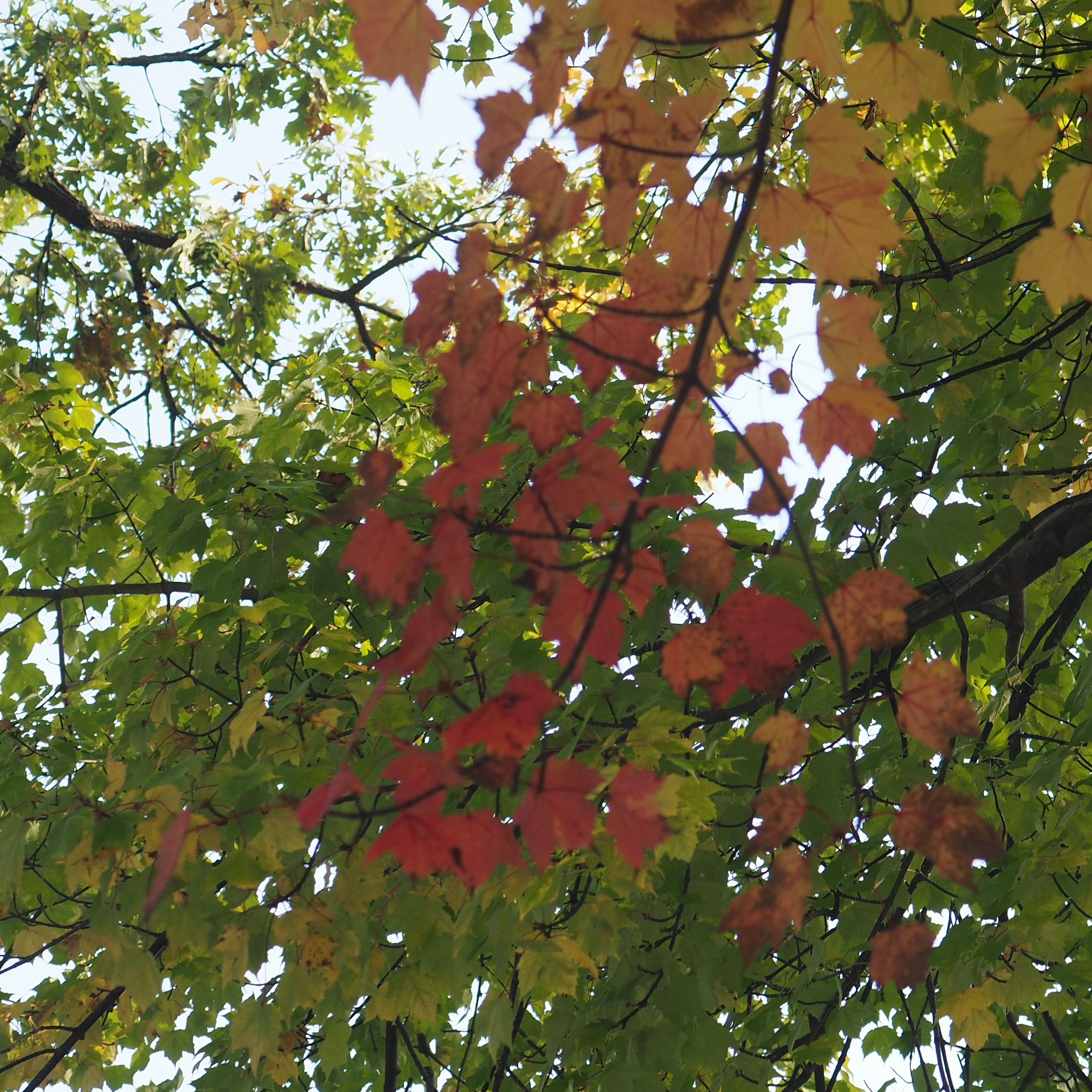
The leaves fall one by one now, but just wait! Here is a nice yellow Maple leaf that landed in fading asters. From the corner, looking over at Palenske Hall, that little Sugar Maple is already doing its thing. As I walk home, one of our Albionite American Grey Squirrel stopped to give me a Squirrel raspberry with a big Acorn in its mouth.
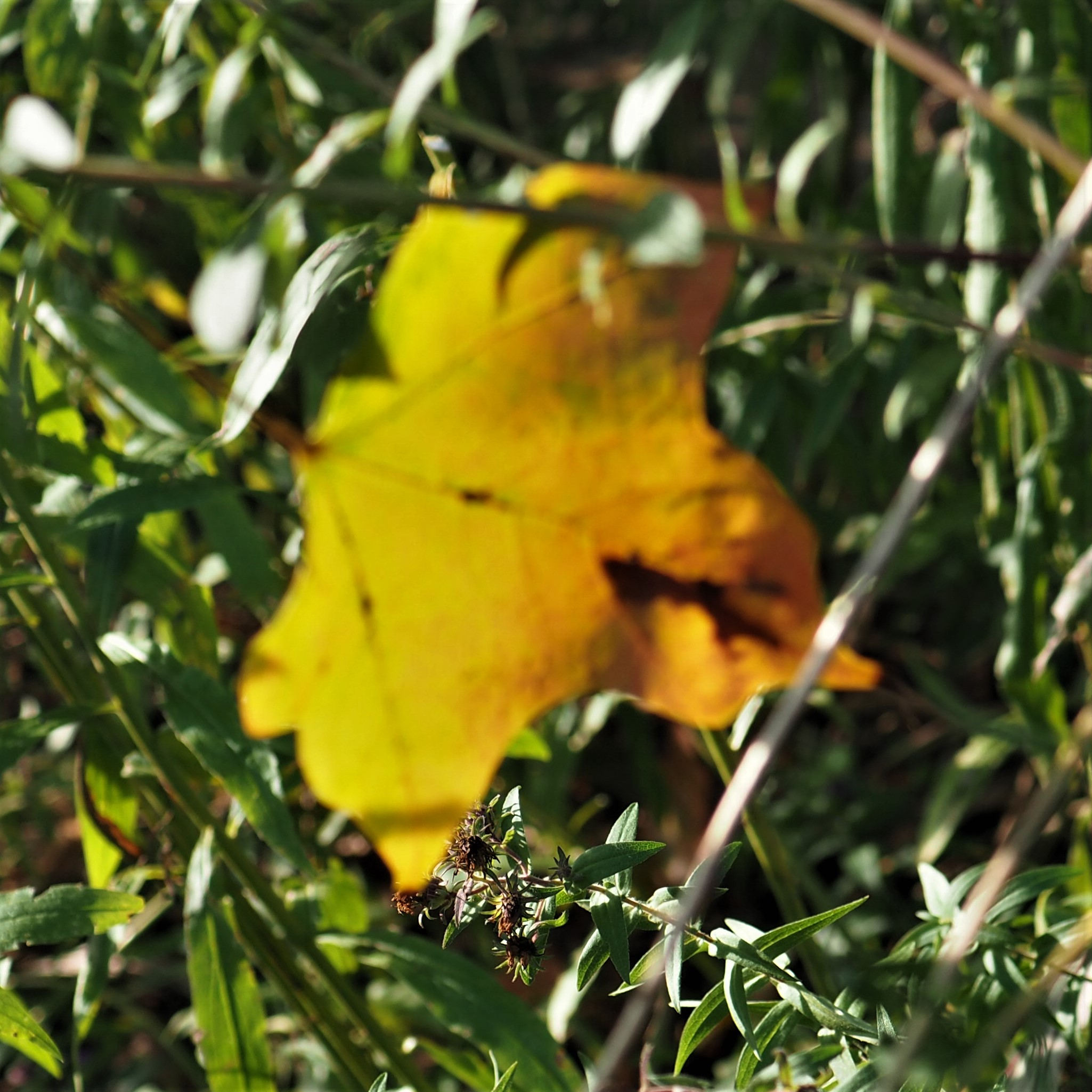

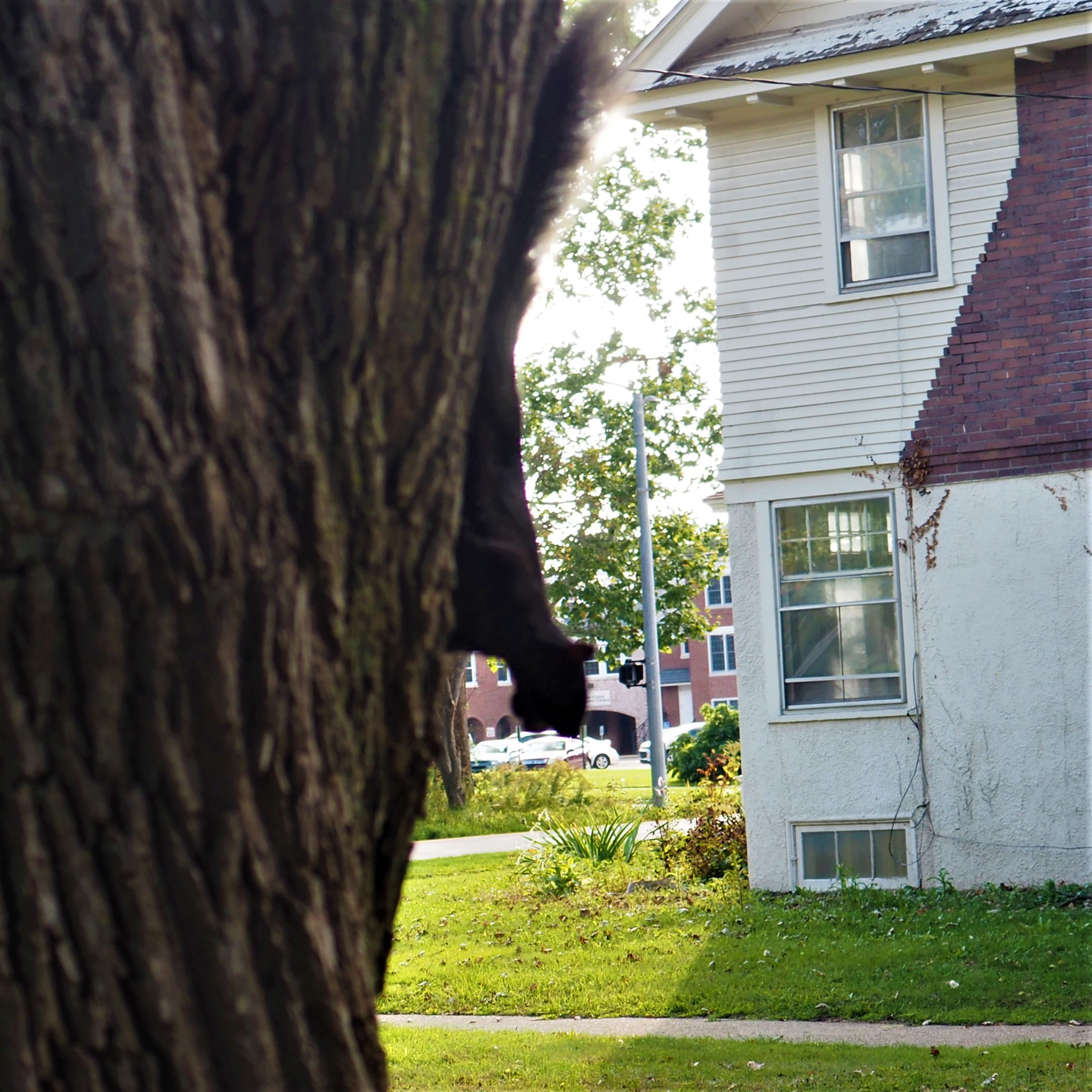
It isn't true that all the leaves fall slowly. My neighbors have just finished decorating their house for Halloween to match the golden leaves that fell in one whoop onto their yard.

My other neighbors' lovely Dogwood was kind enough to allow a squirrel to plant a seed in my weedpatch, and now that little clone has beautiful red edges on its leaves. Here's some more of that Euonymus. At home, still outdoors on the deck sits our Jadesy. She still has not begun to put out flower buds between pairs of new leaf buds. She has three weeks to slowly get used to the chilling night air. At that point, she is allowed indoors and I do hope she is all set to bloom after the flower buds get with it.
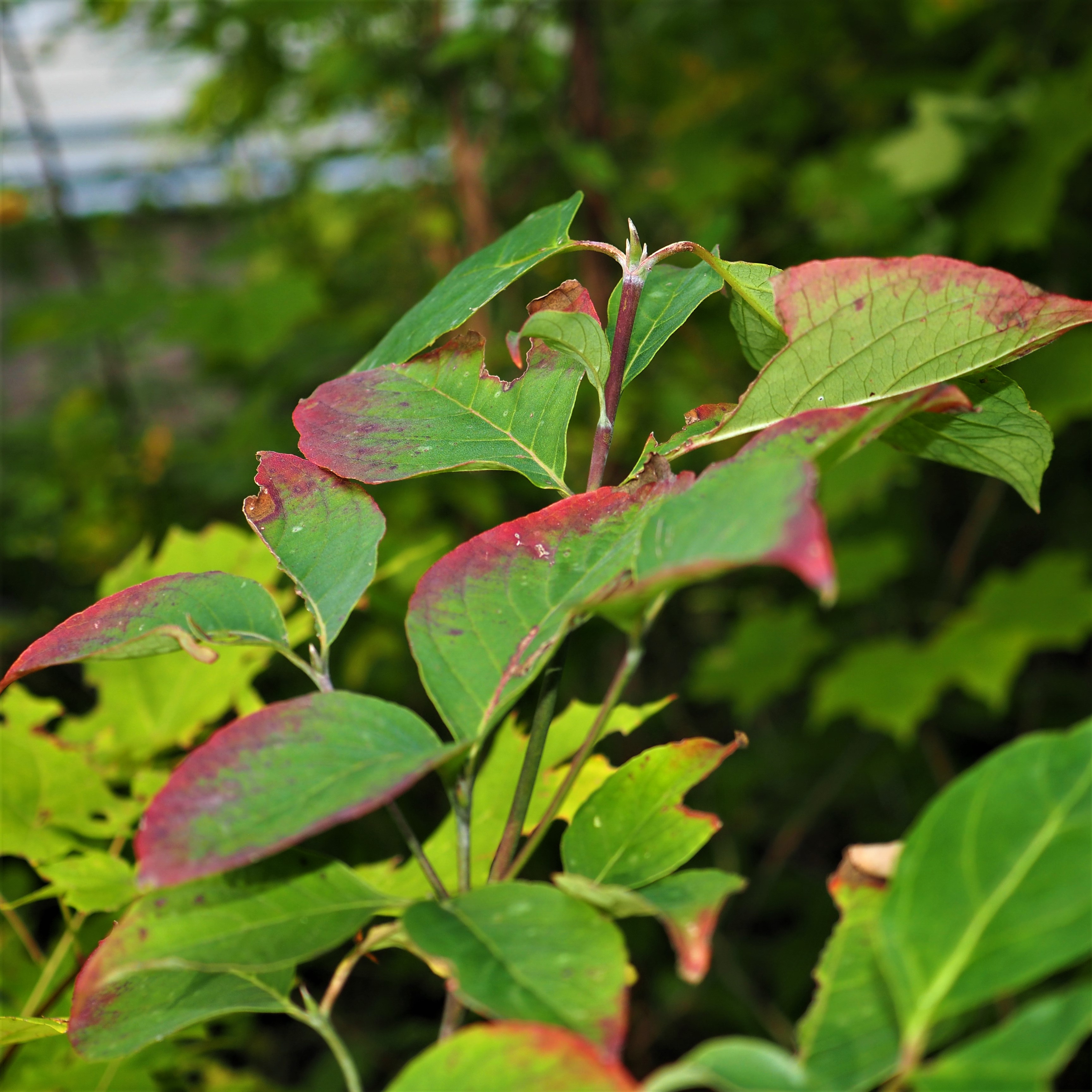

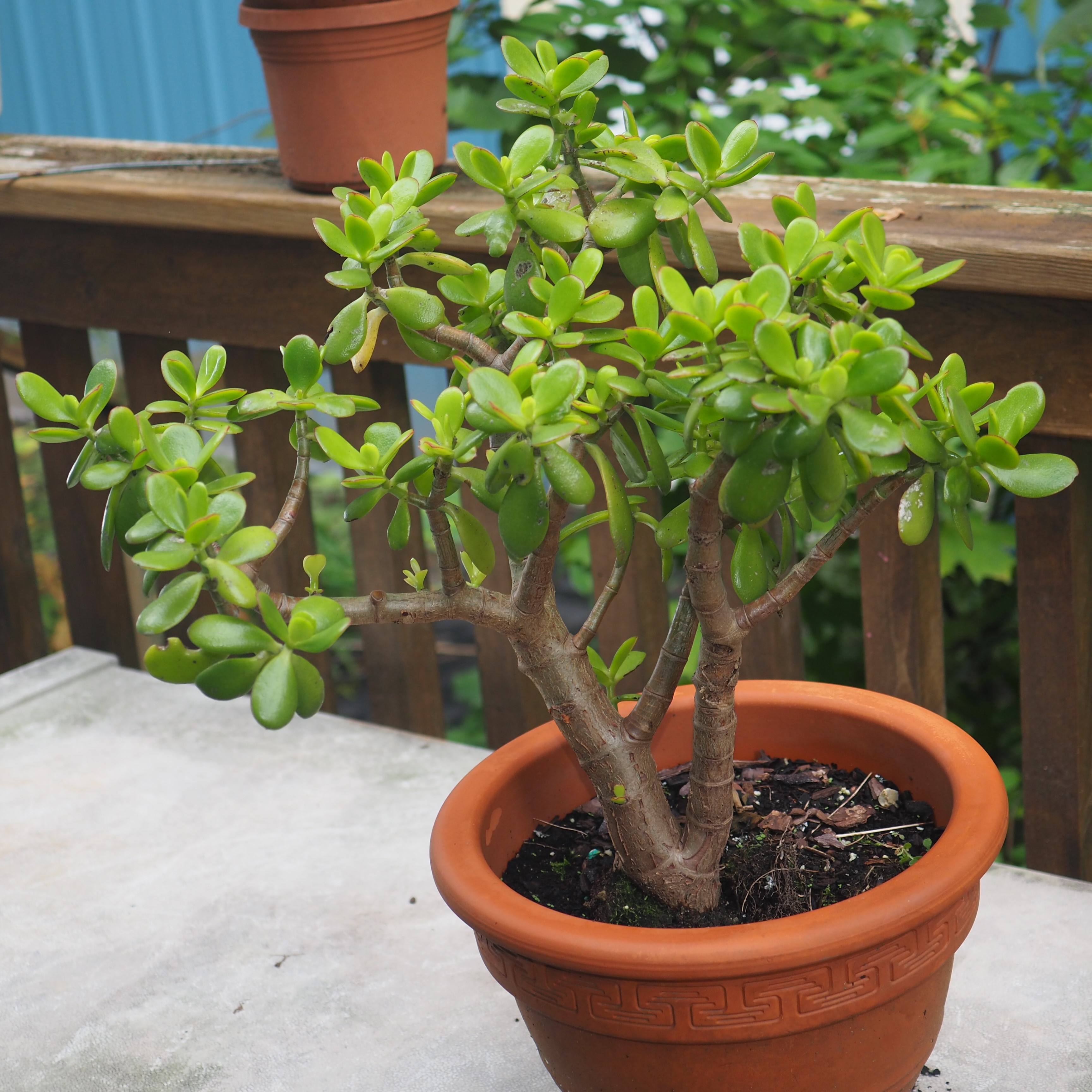
We still have only a few Spider and Wasp pictures to show. Most of the Spiders we saw this week were Common House Spiders with or without their prey. Here first is one with a wrapped Beetle. Second is a black and white color combo of another Common House Spider. Third is another kind of Cobweb Spider (remember the Common House Spider is one of the Cobweb Spiders).
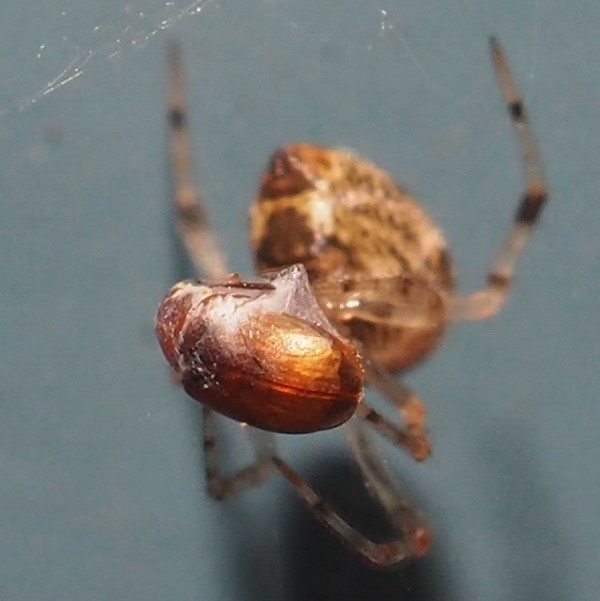

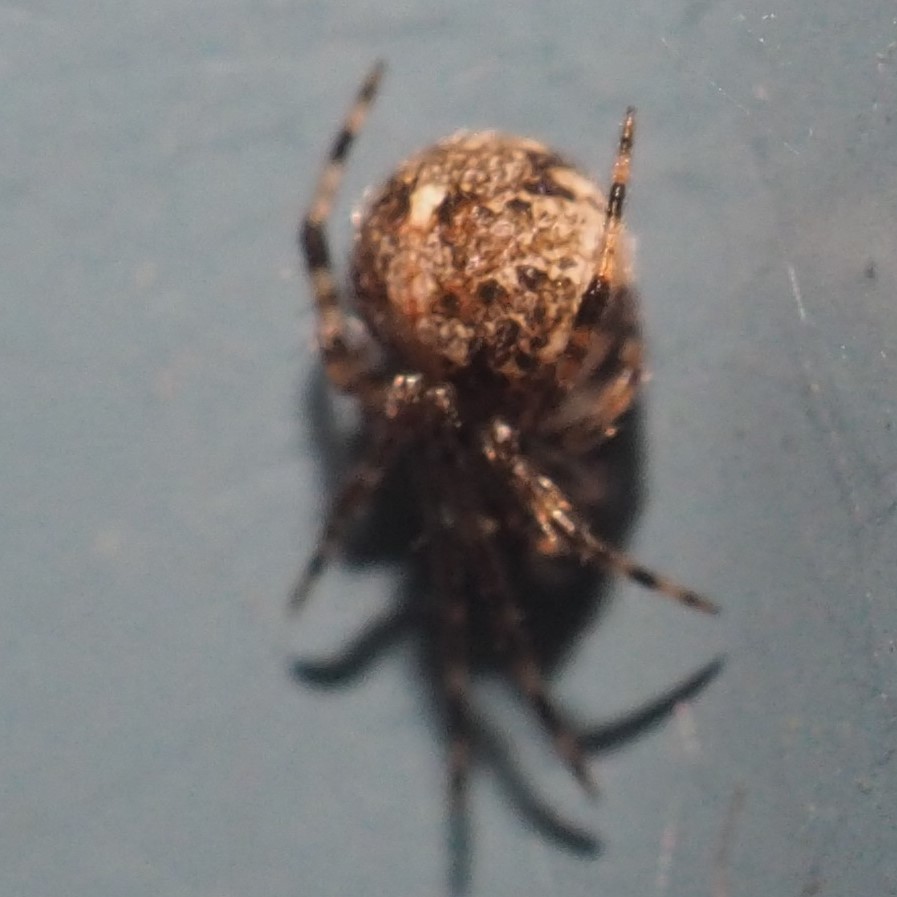
But for some reason, the population of Pirate Spiders (genus Mimetus) has grown and I'm always pleasantly surprised to see one of them.

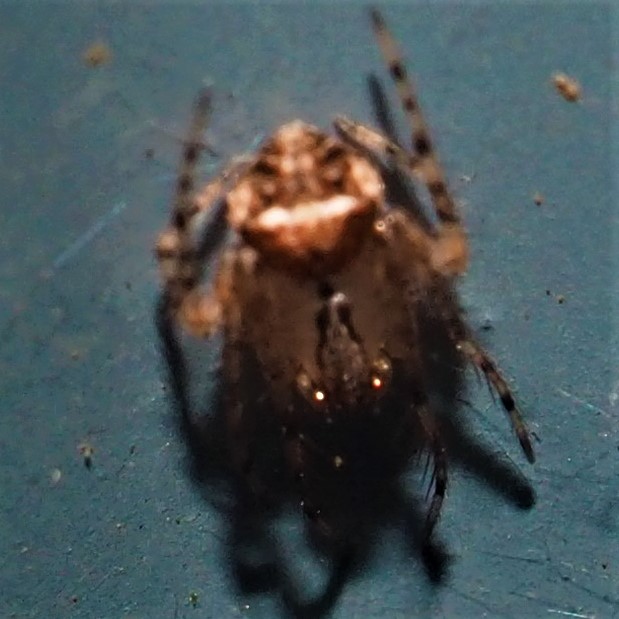
There were so many other things to try to capture that I didn't follow many Wasps. They weren't acting out like the ones that carried Spiders home for their babies, or that a Spider carried home to her own babies. One of the groups of Spiders that I particularly like are small and iridescent, like these Chalcidoid Wasps (pictures 1 and 2) of subfamily Pteromalinae. Picture 3 shows a female ichneumonid Wasp (as witness her long ovipositor).
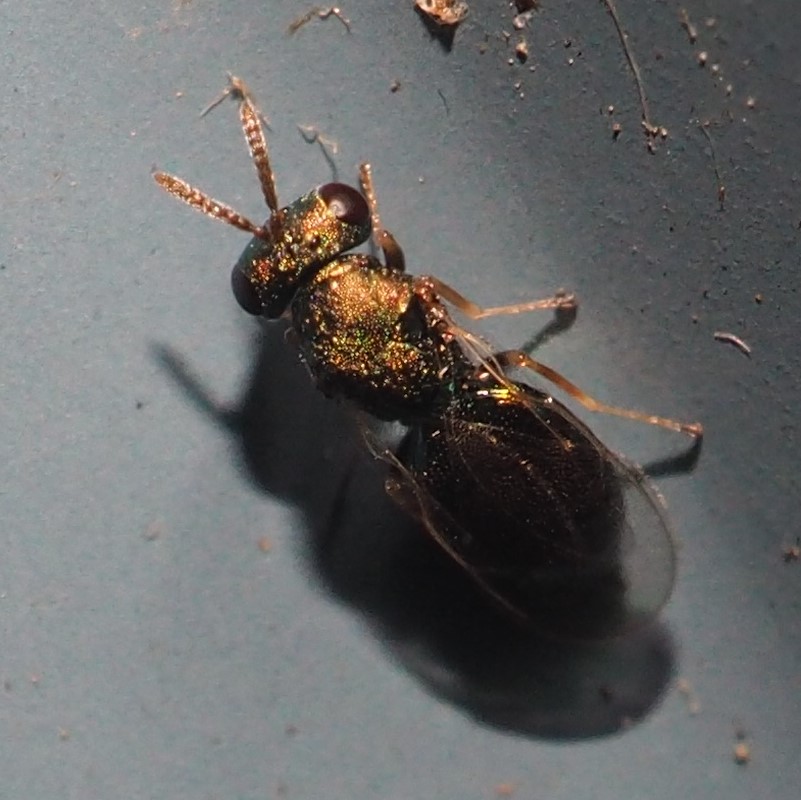
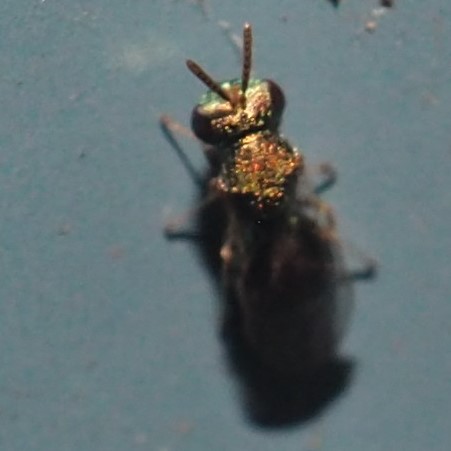

Let's plop down next to the Pond to relax from all the things we've seen today. I saw the first Redbud leaves floating on it this morning and soon I'll have to put down the leaf net. Meanwhile, the Frogs have been quieter and quieter. I haven't seen all three for some time. The smallest one may have begun its relocation. Here's Frog One. And Frog Two. And my neighbor Pat Messer found this lovely little Grey Tree Frog last week sitting on a Hosta leaf in her flower bed.
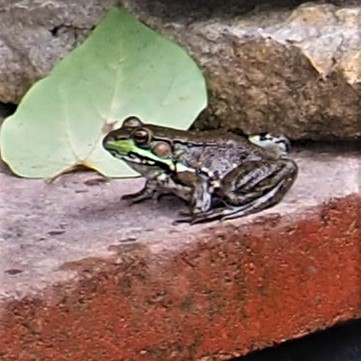
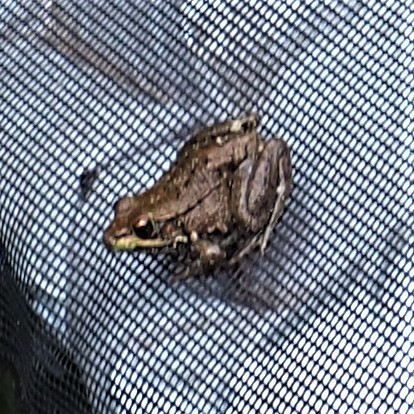
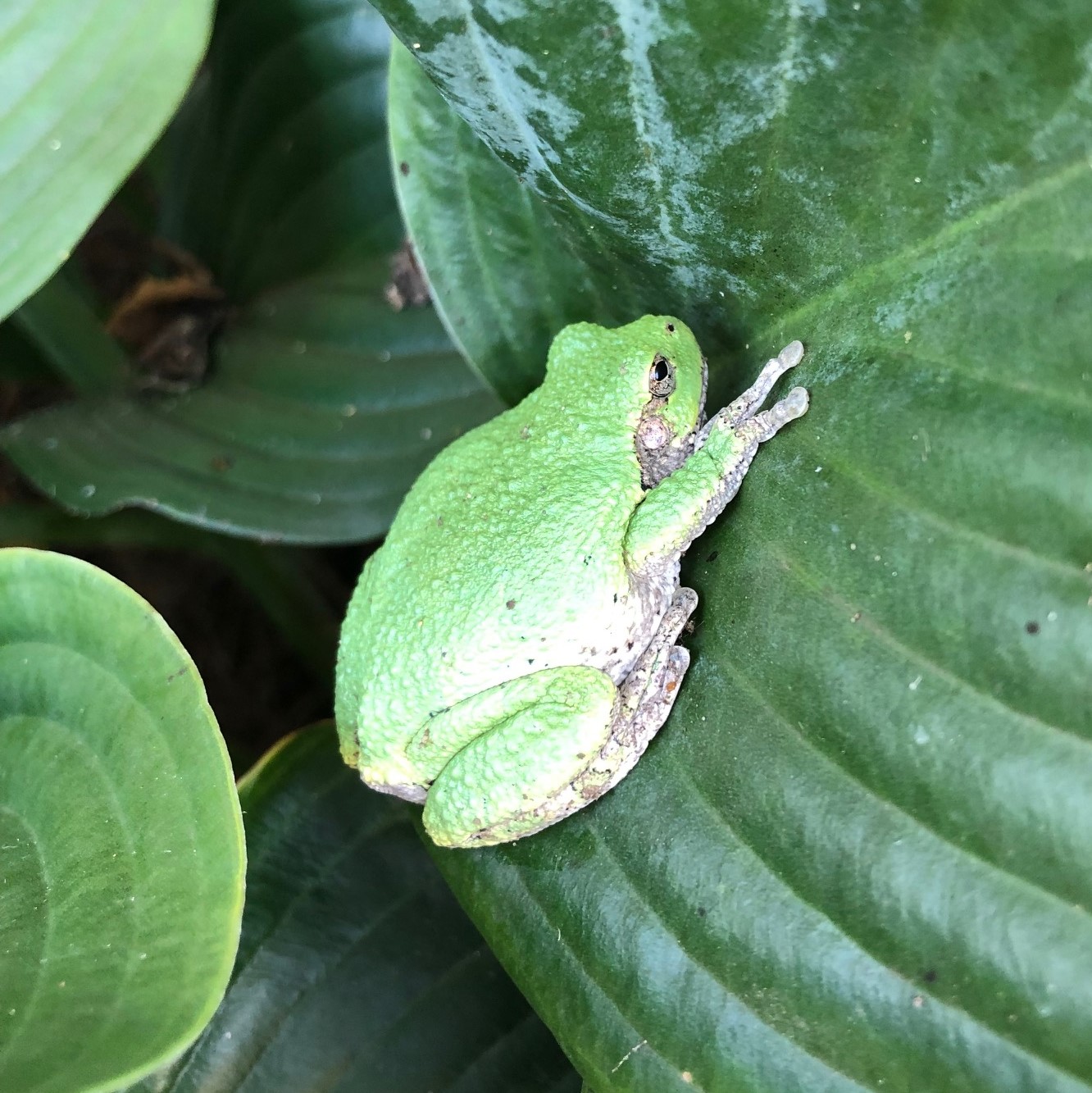
The fishes always seem hungry. But now is the time for them to taper off. Soon the water temperature will be too low to feed them. So their little metabolisms have to drop off so that they can survive winter at the bottom of the Pond. But here they are. They swim round and round waiting frantically for the first flakes of food. They are rewarded by my singing and tossing of flakes right out of the can!
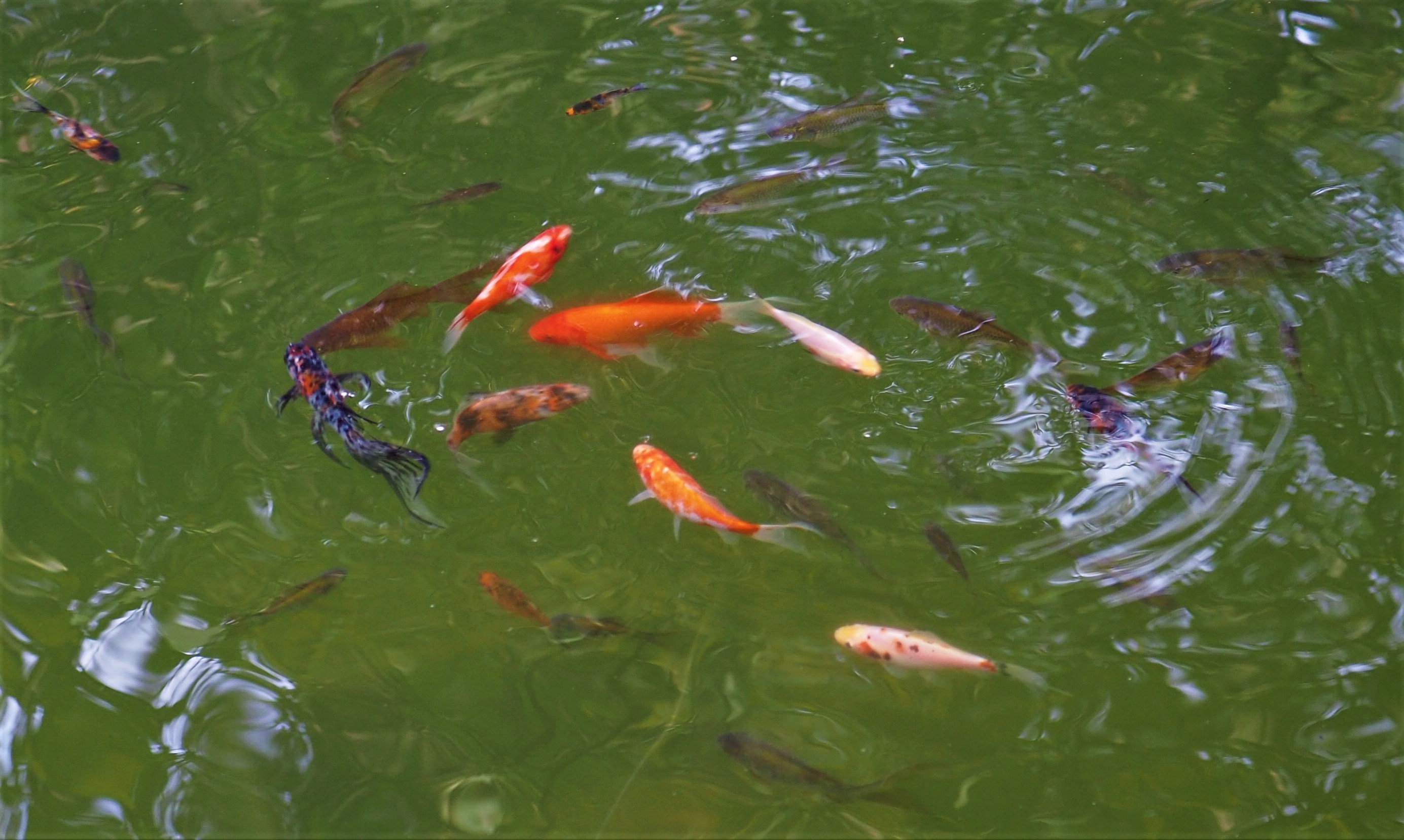
Another week, another landscape, every time I look out the window. I hope everyone is enjoying the change of seasons. It has been a good system for thousands of years. Let's hope that we can manage to rescue our beautiful planet from the ravages of global climate destabilization. Meanwhile, please enjoy all the beauty that still exists here. I'm not ready to leave for Mars yet. We all must just hang in. It's all our planet!
Love, Martha
Back to October 3, 2021
Forward to October 17, 2021
Back to main menu
copyright Martha O'Kennon 2021



























































































